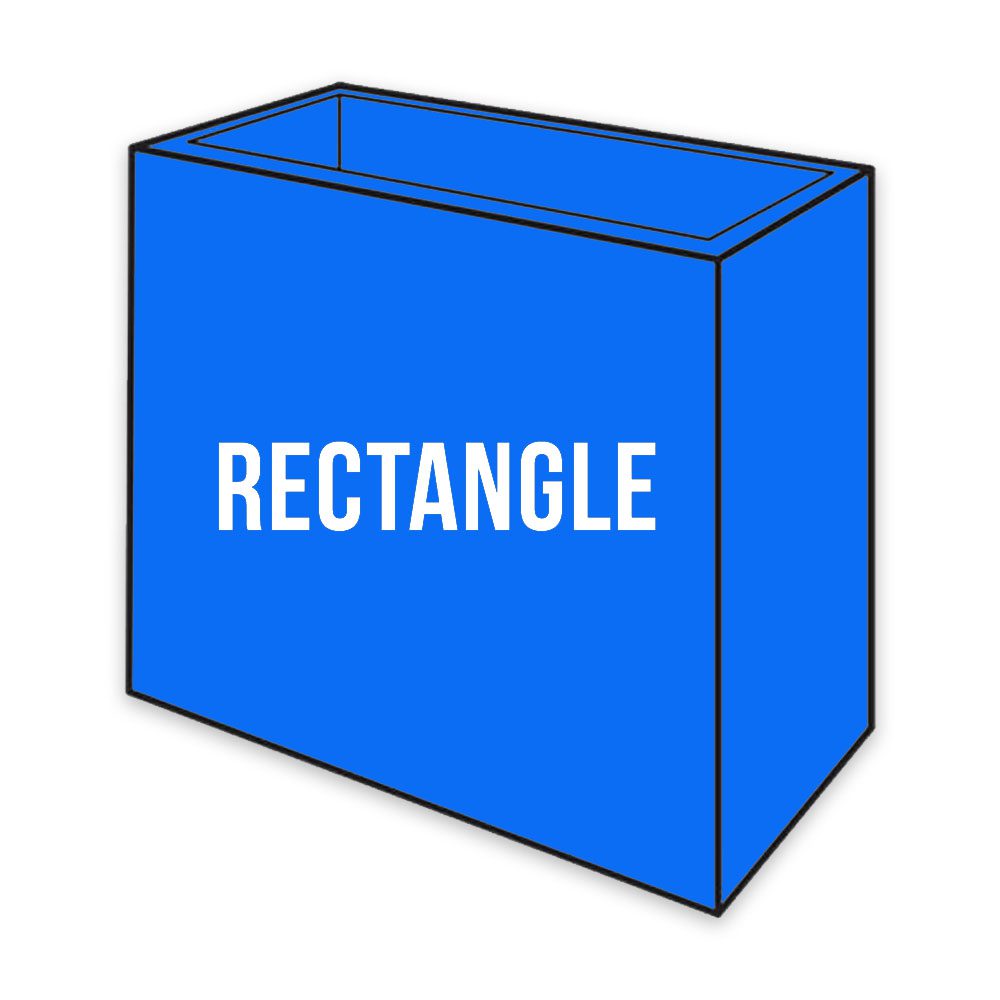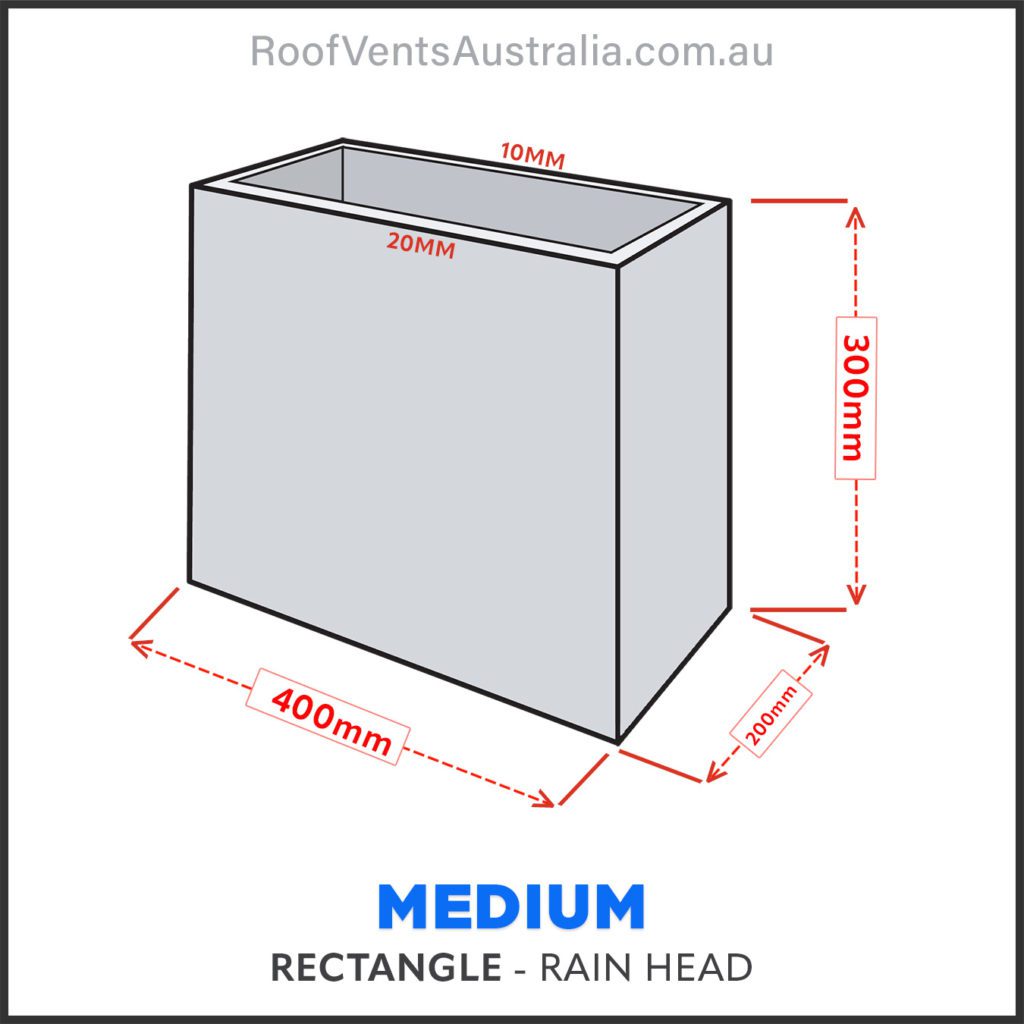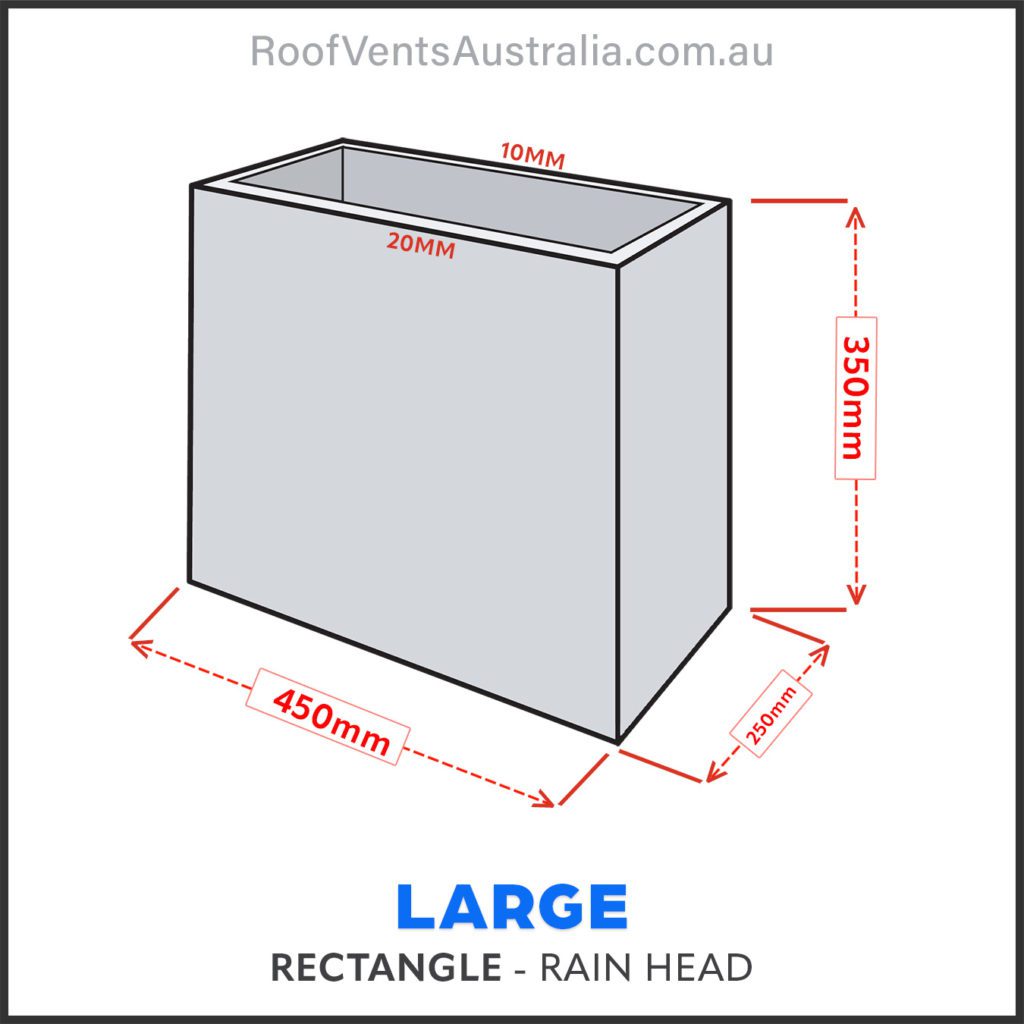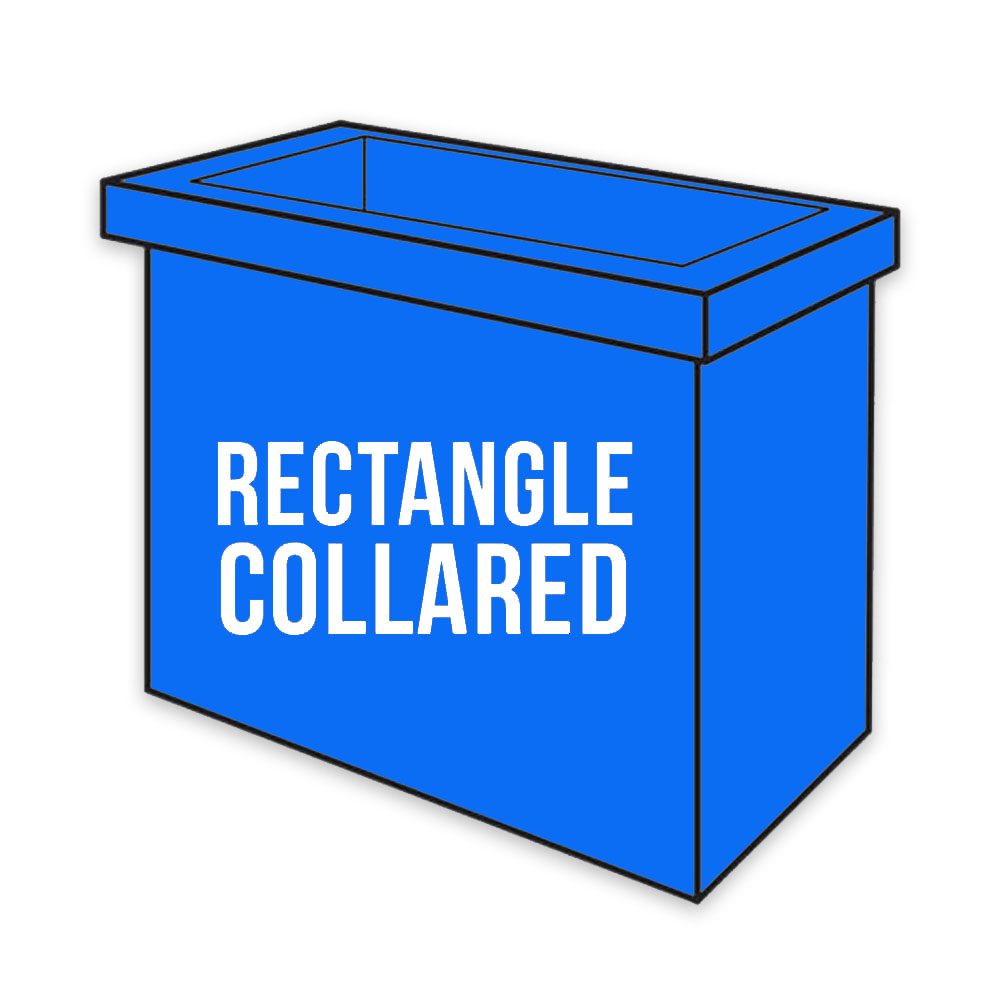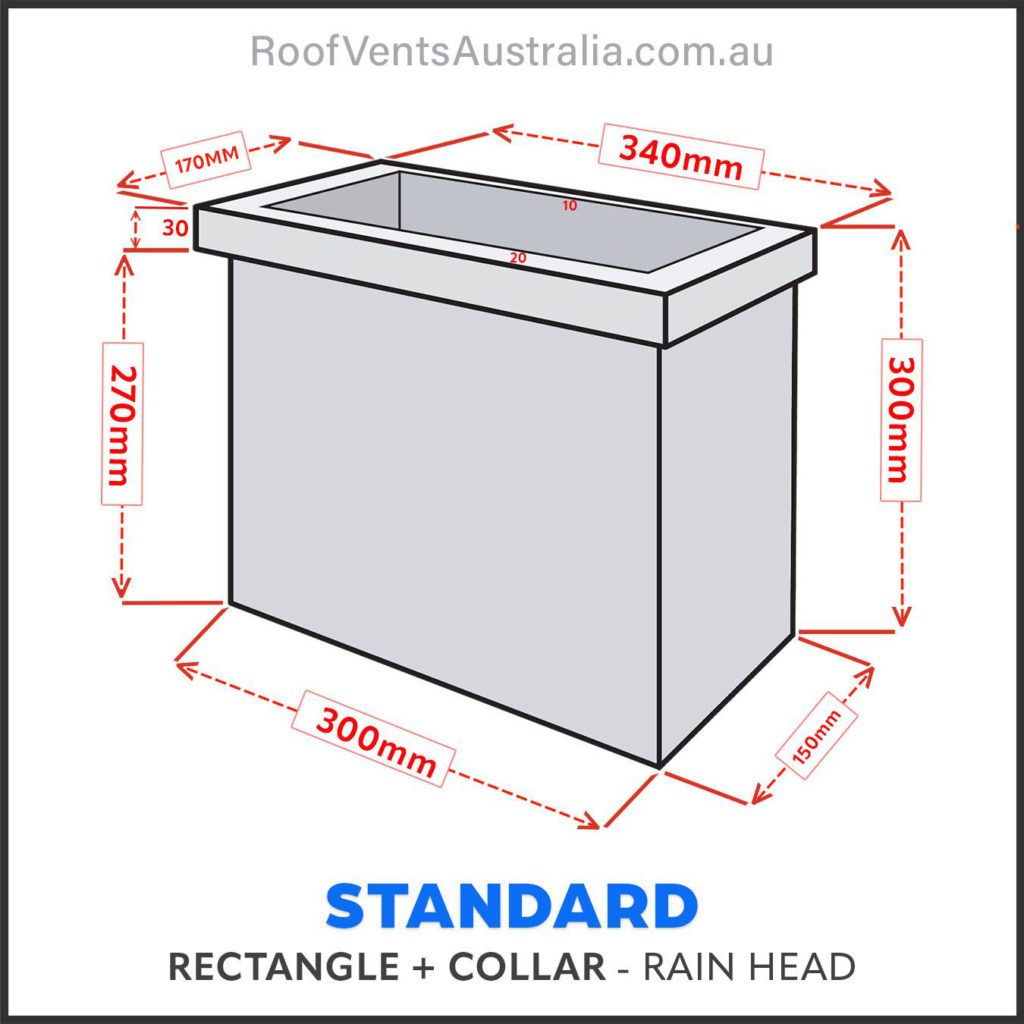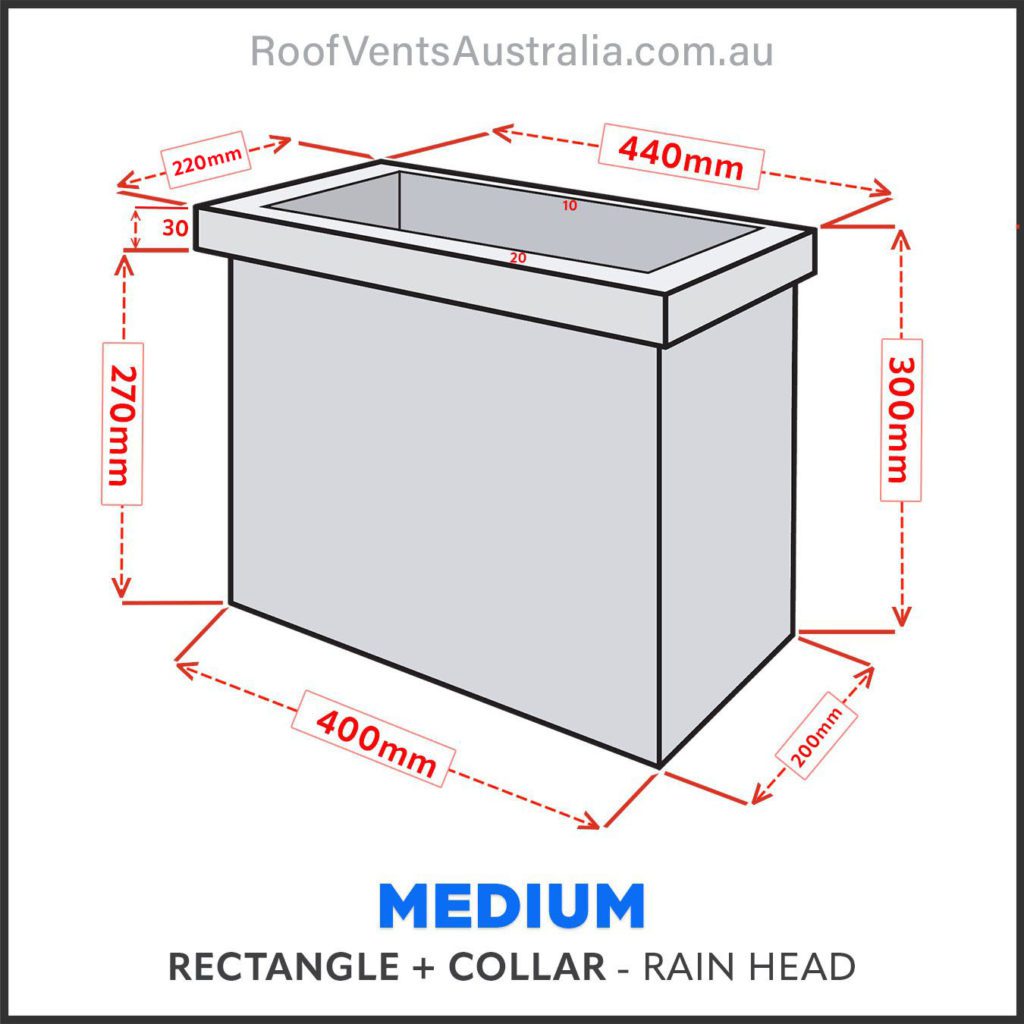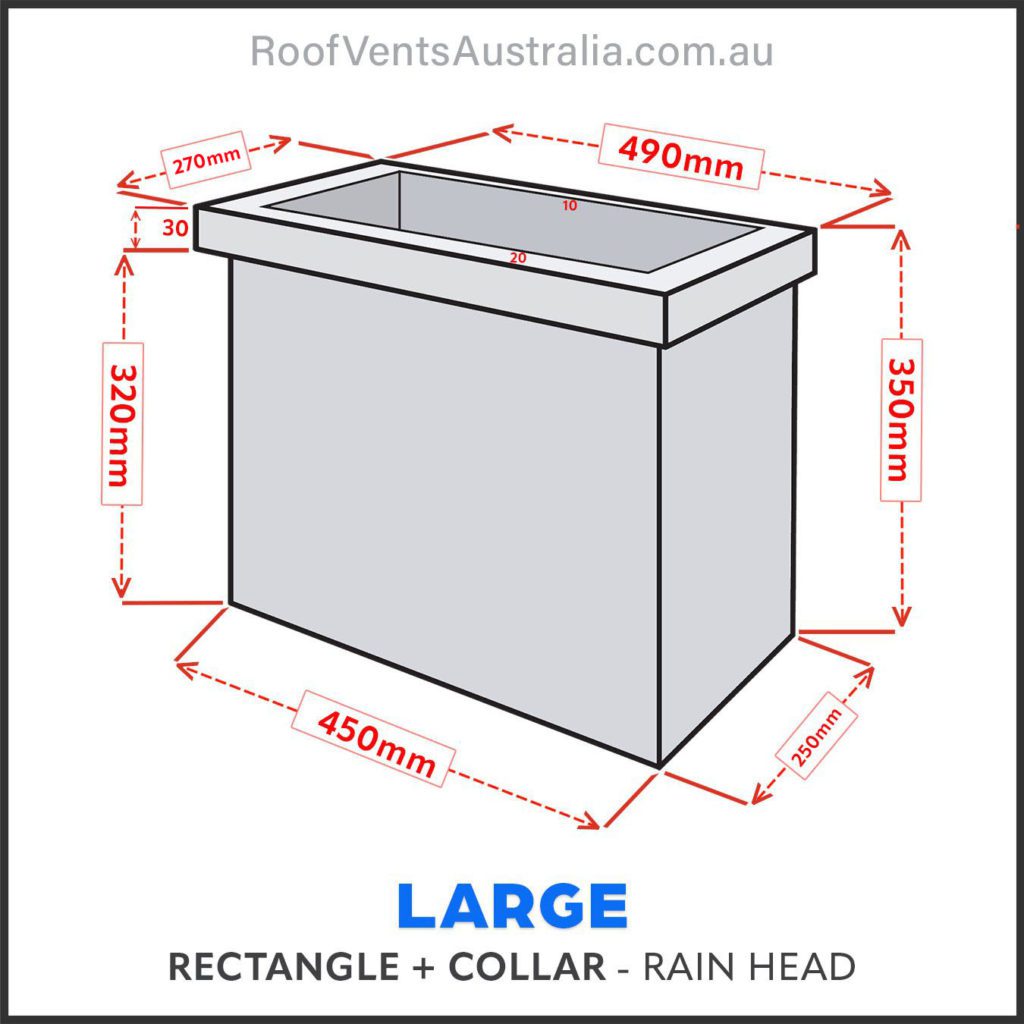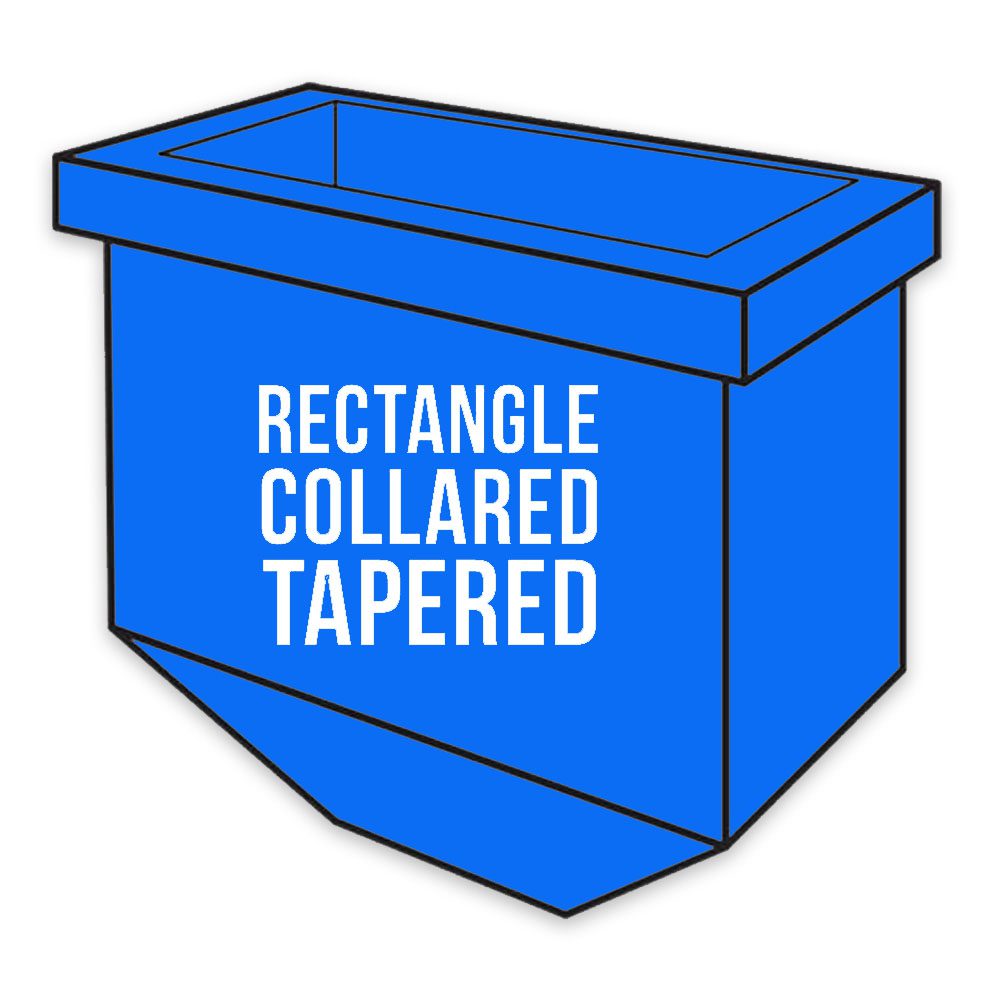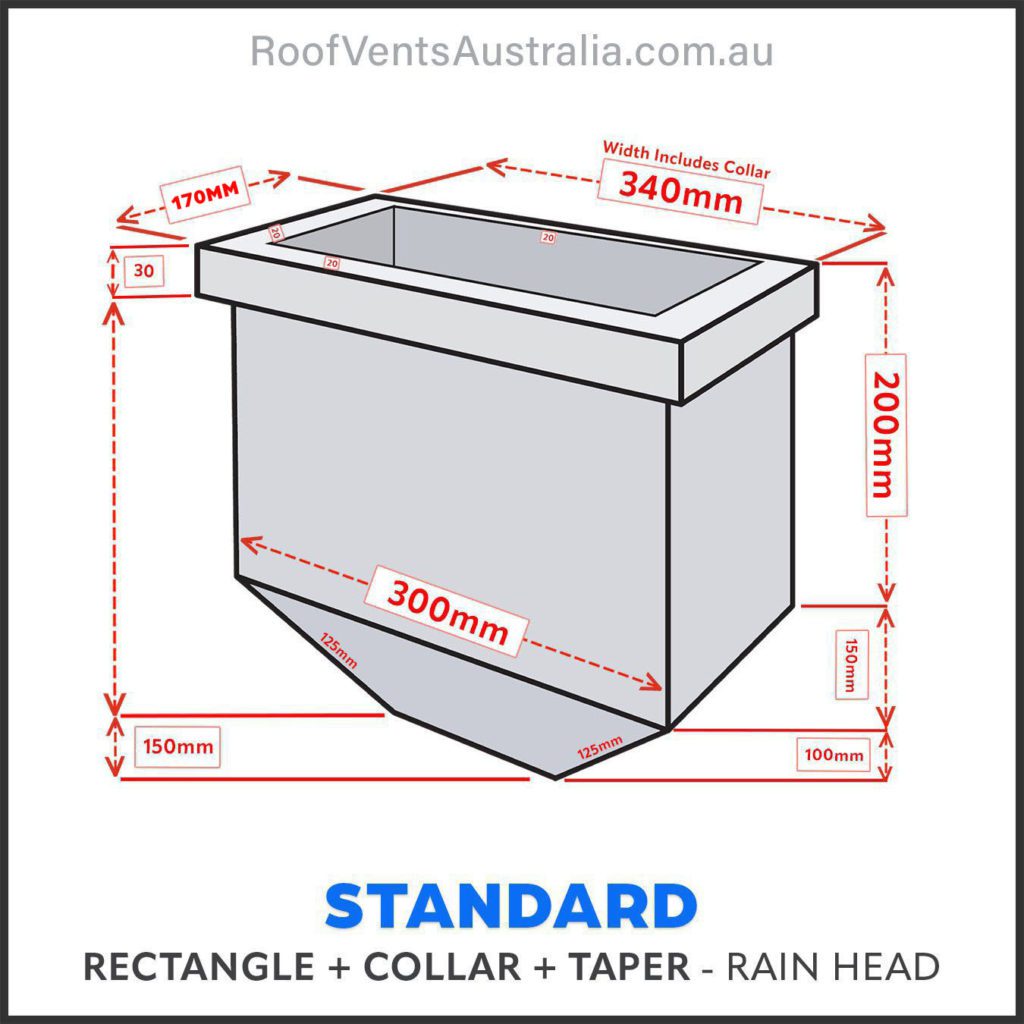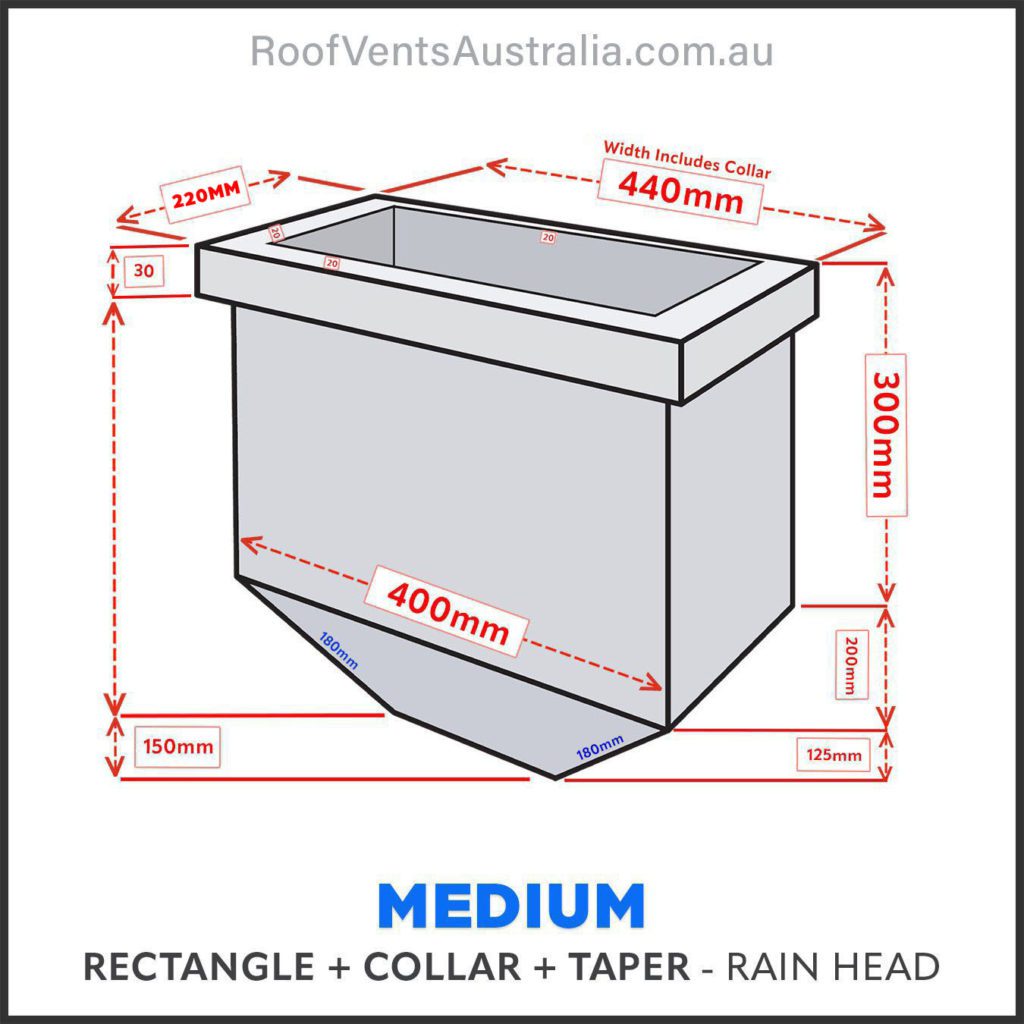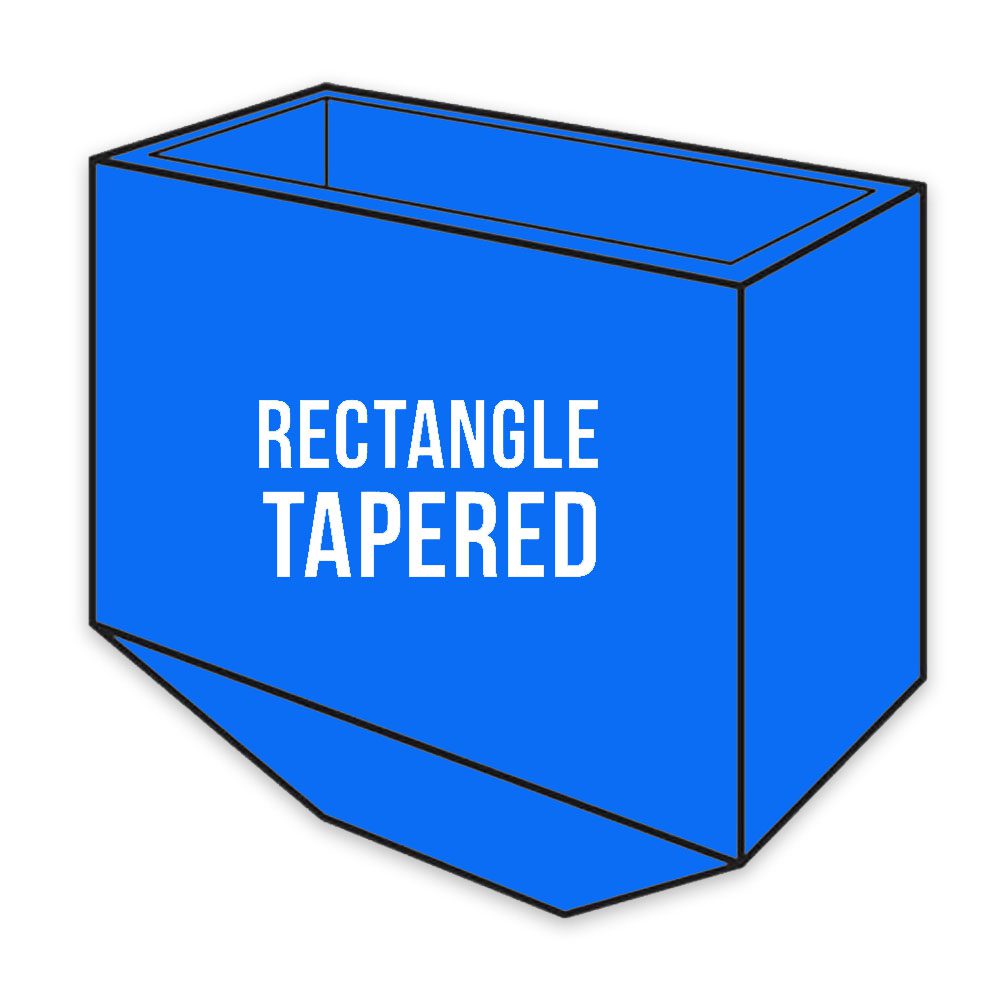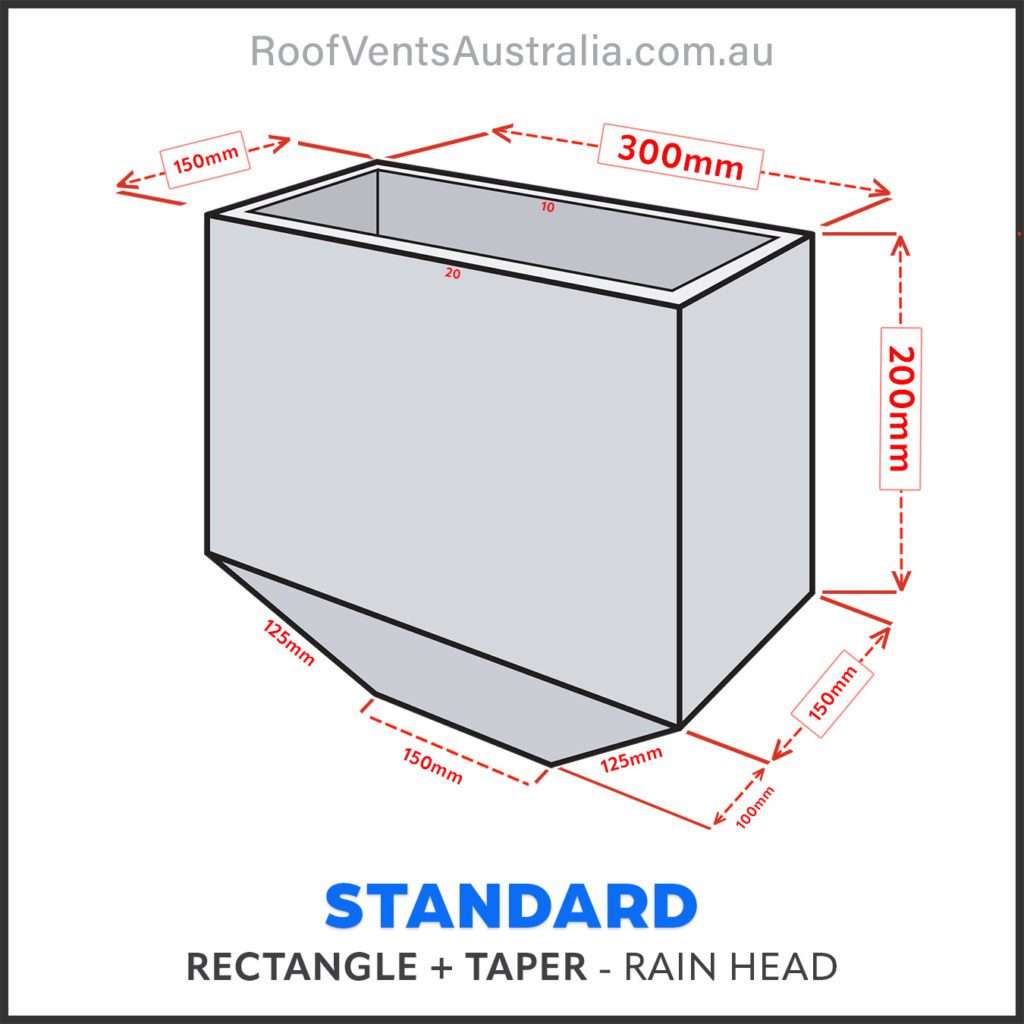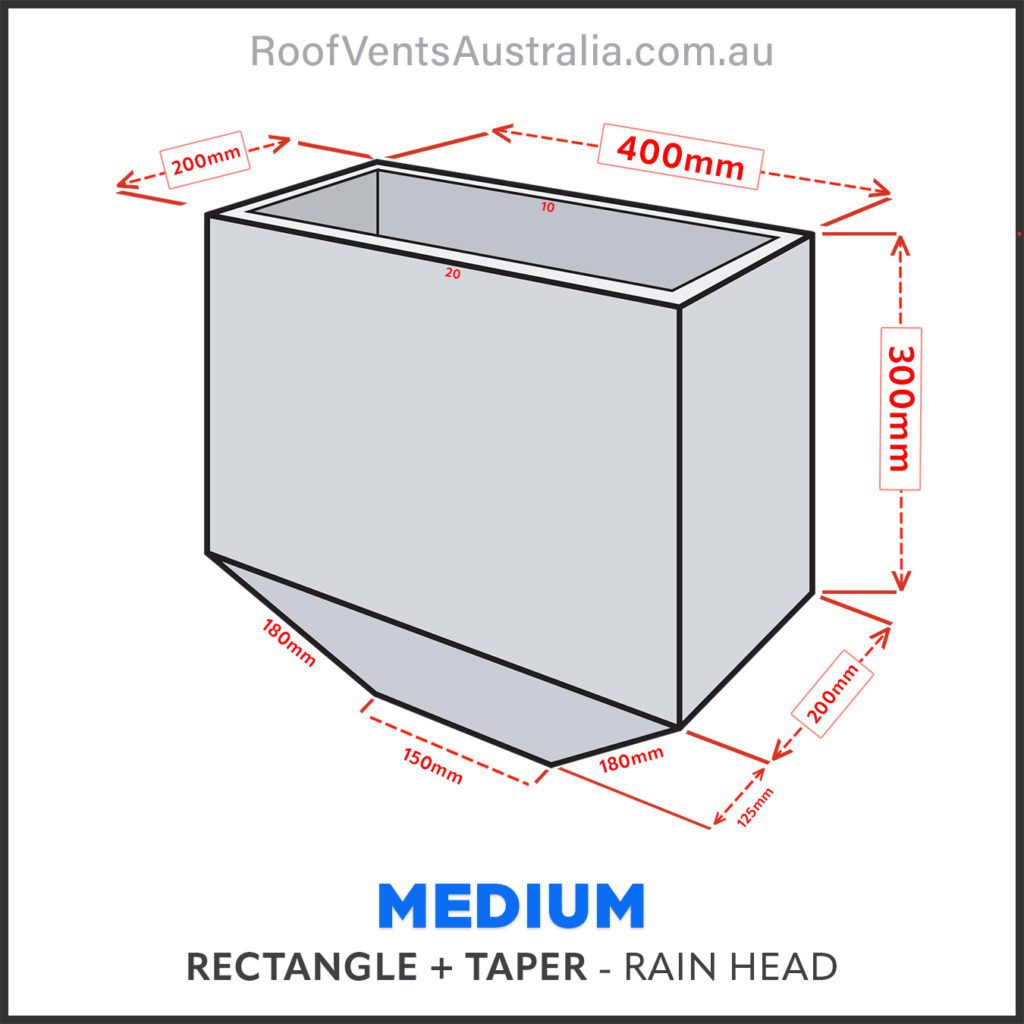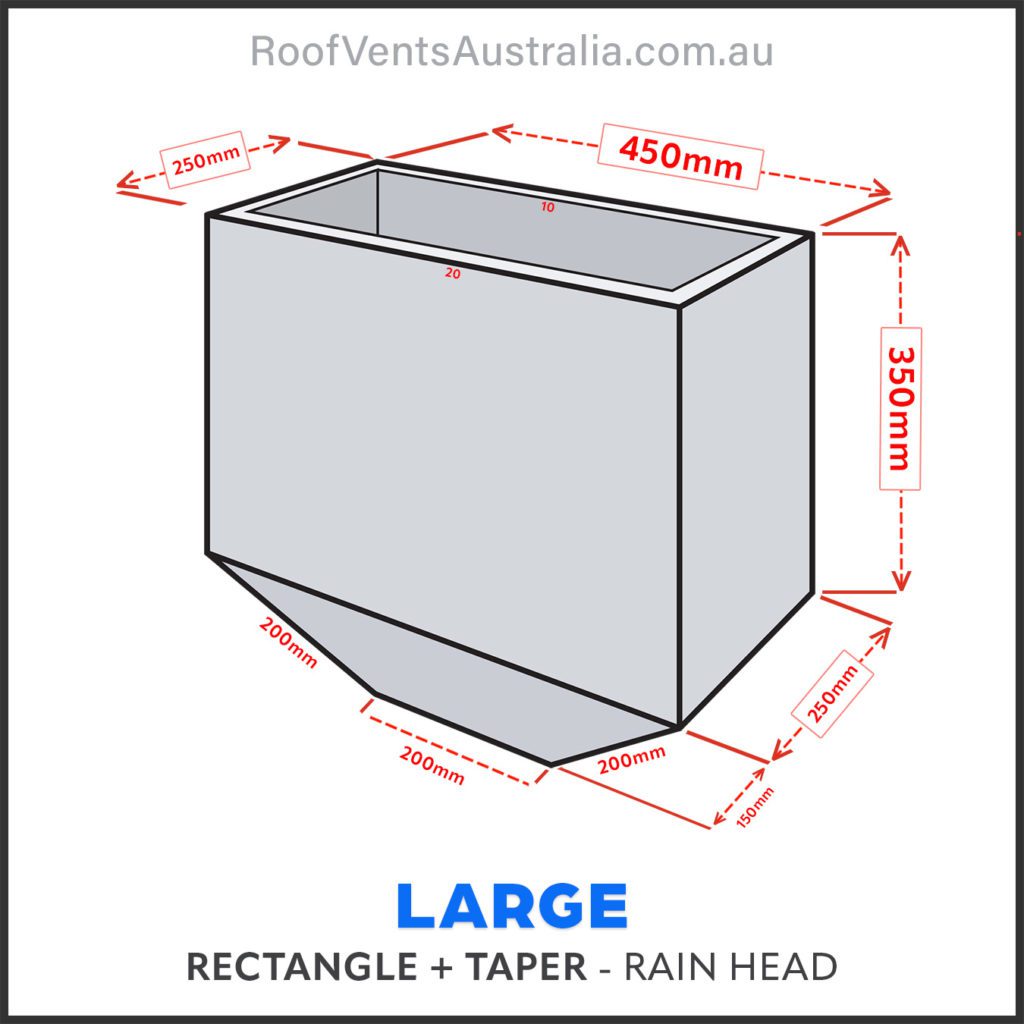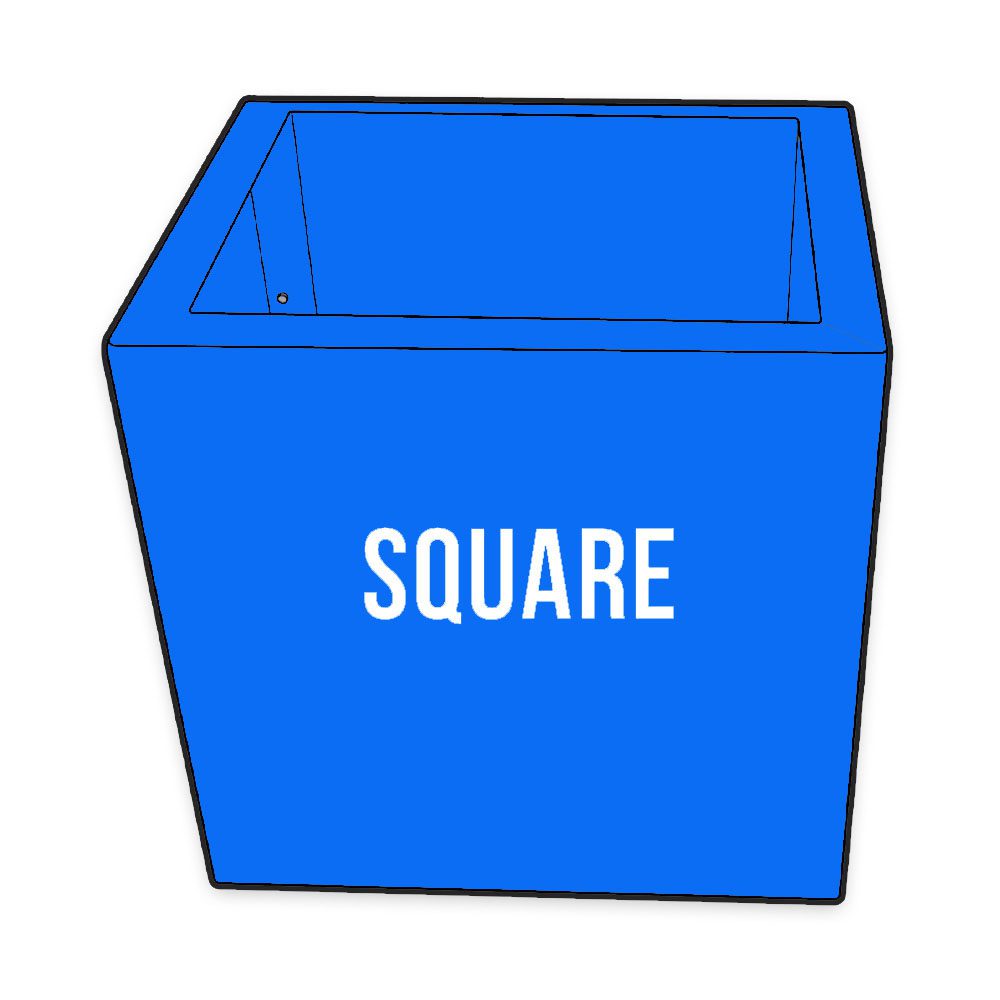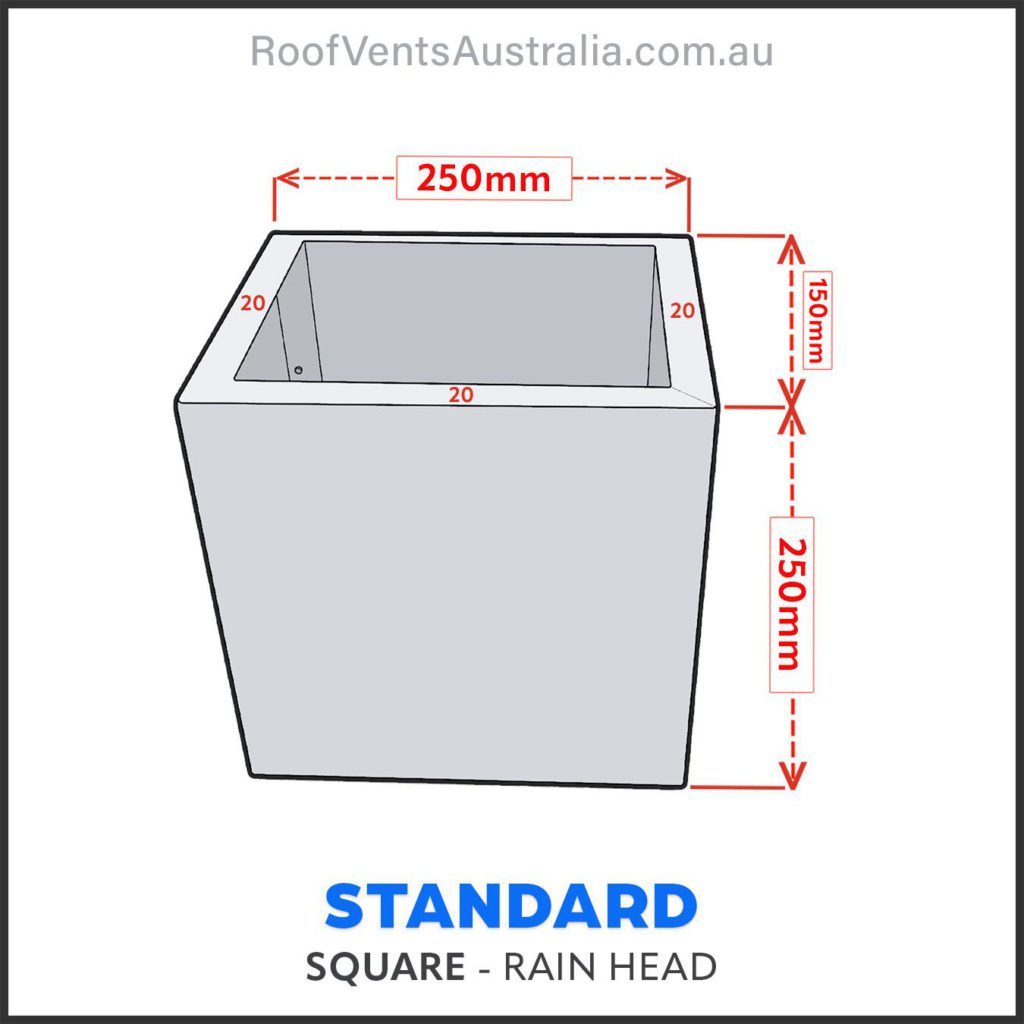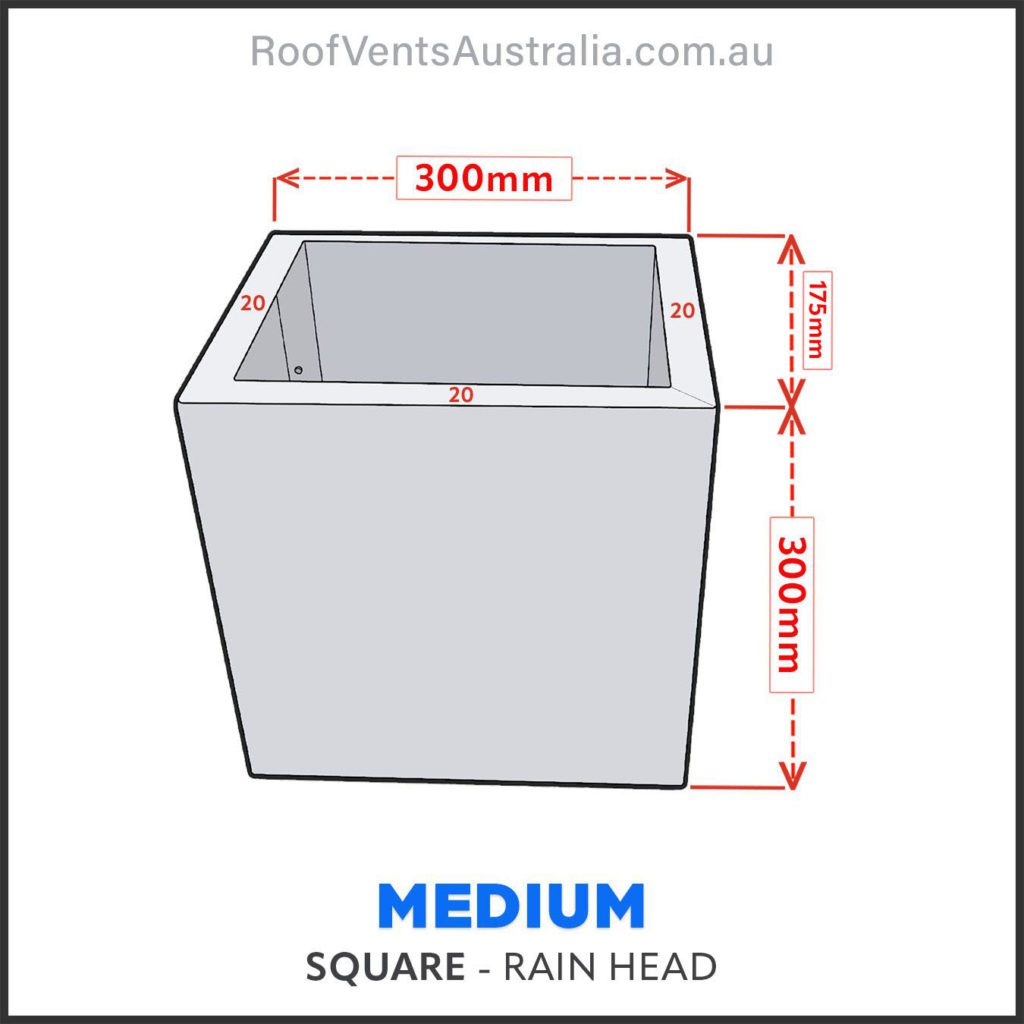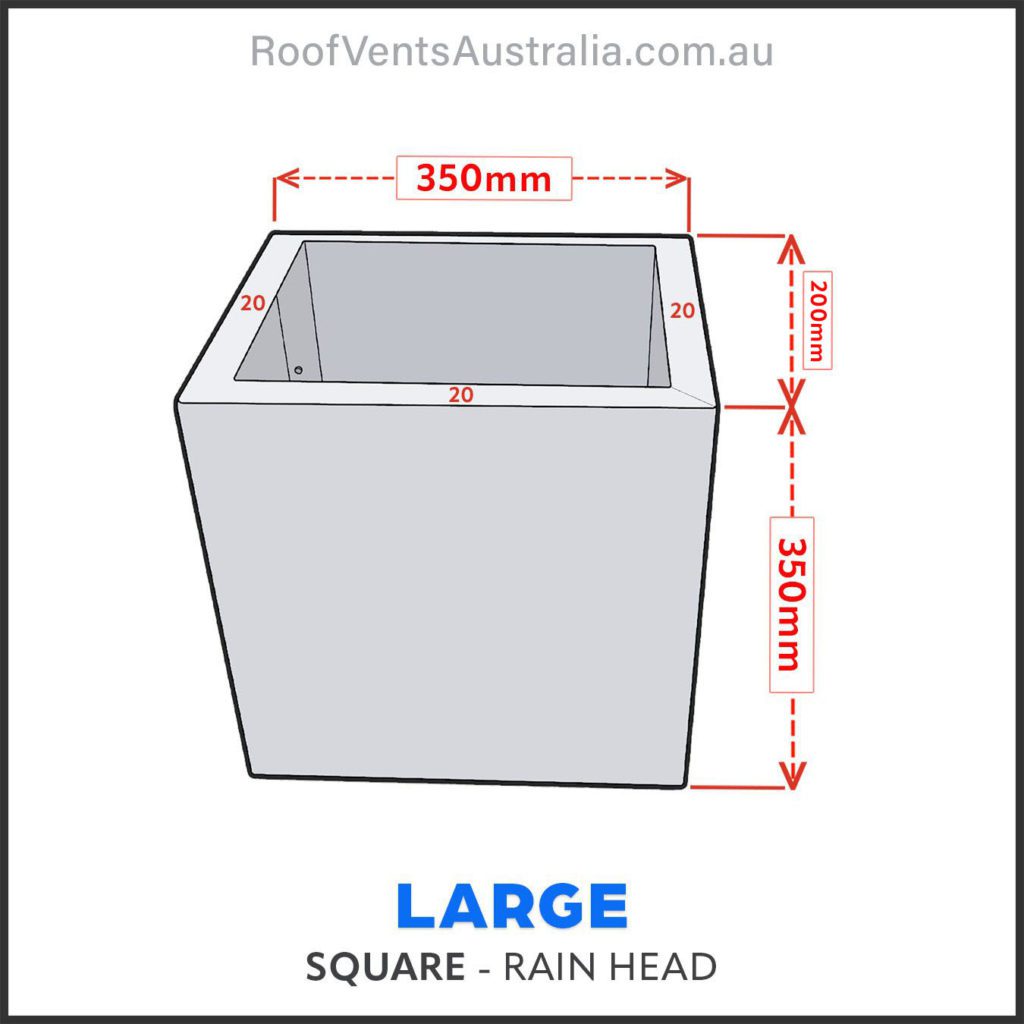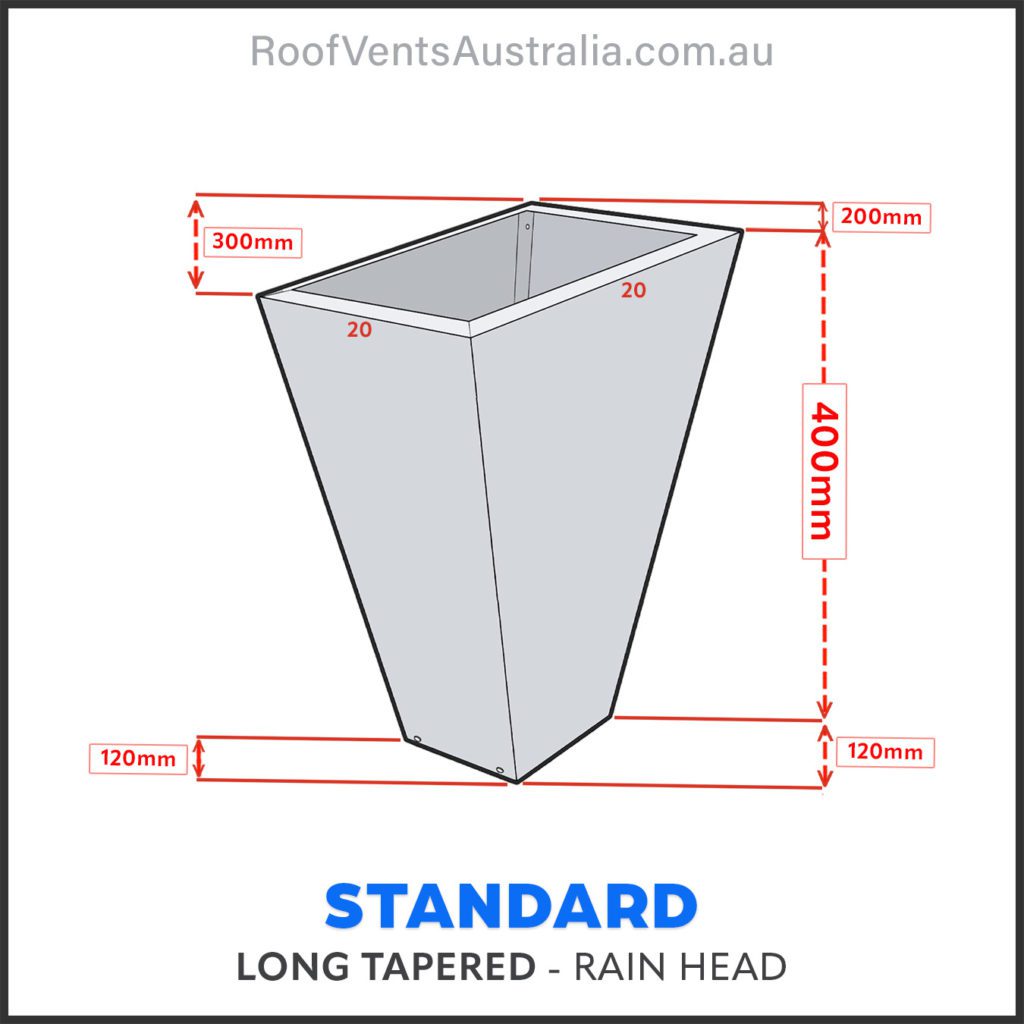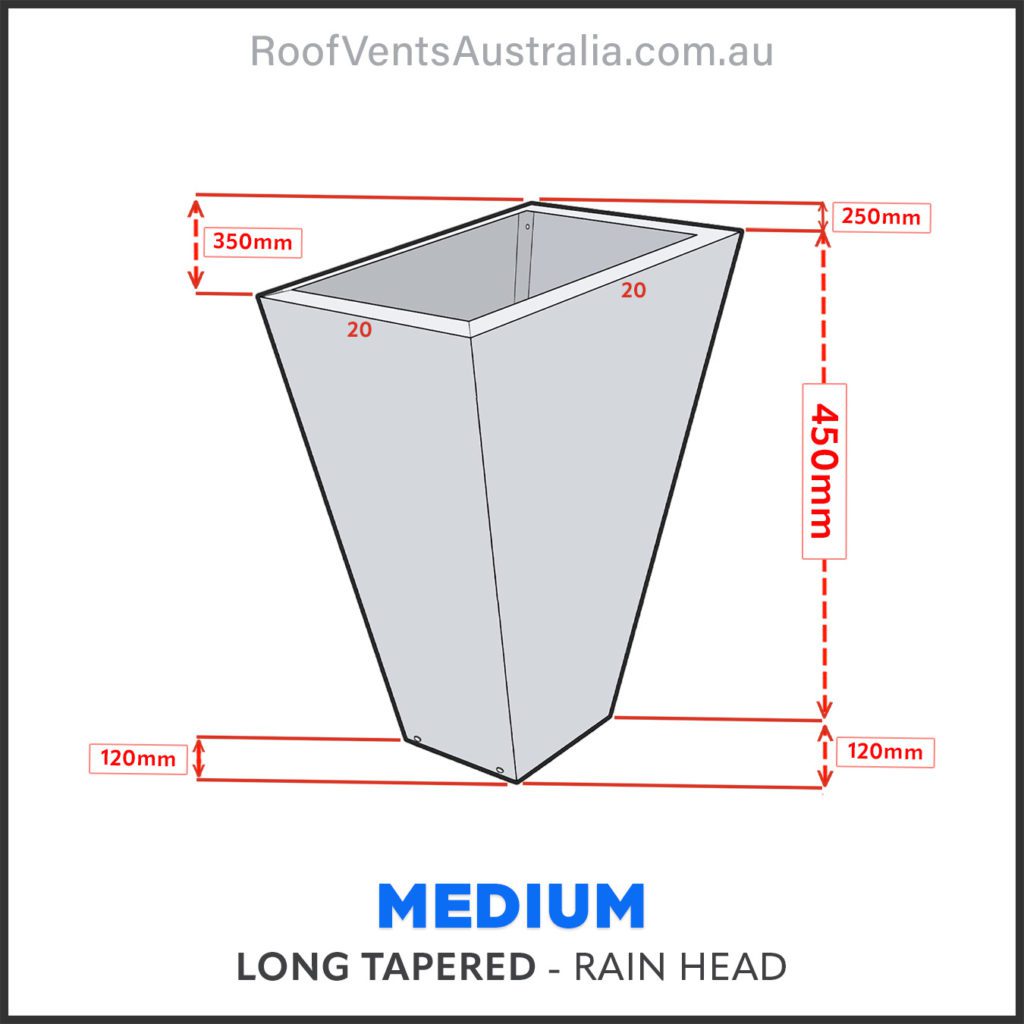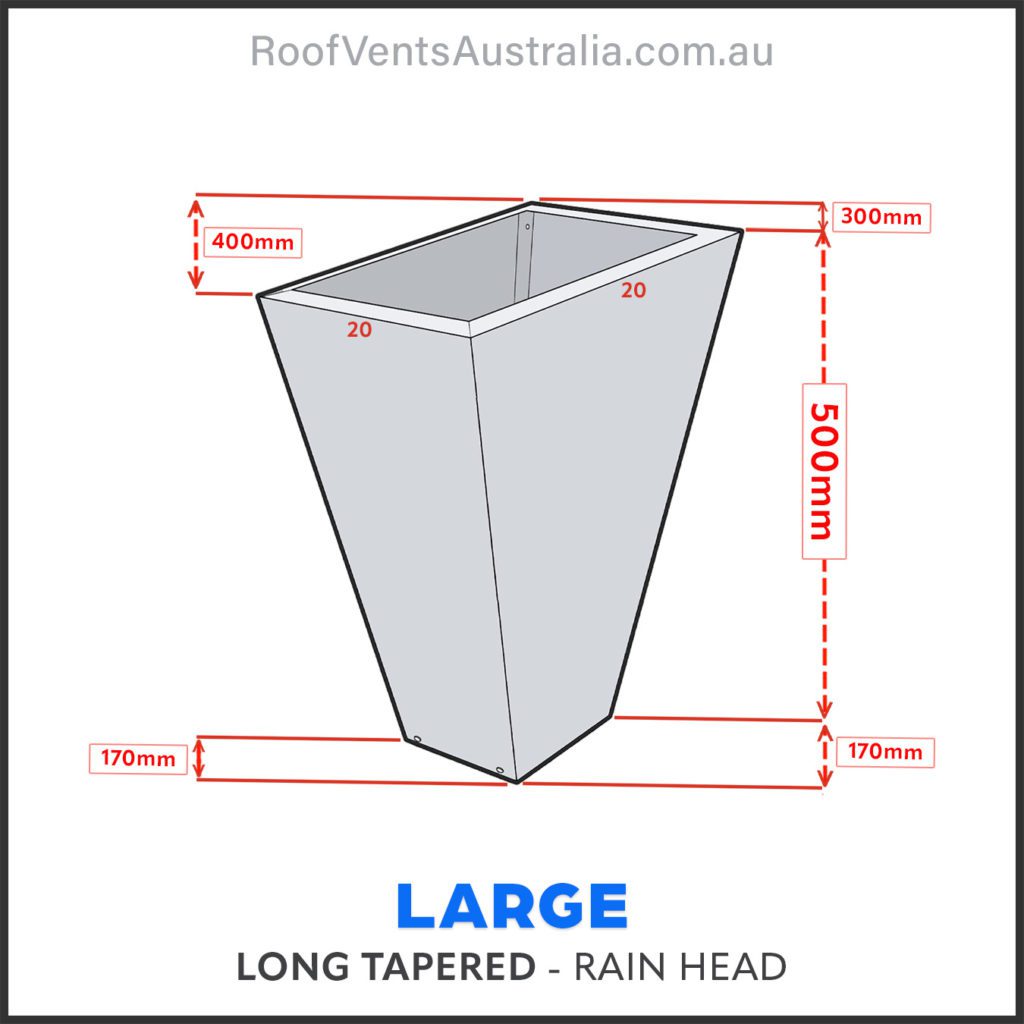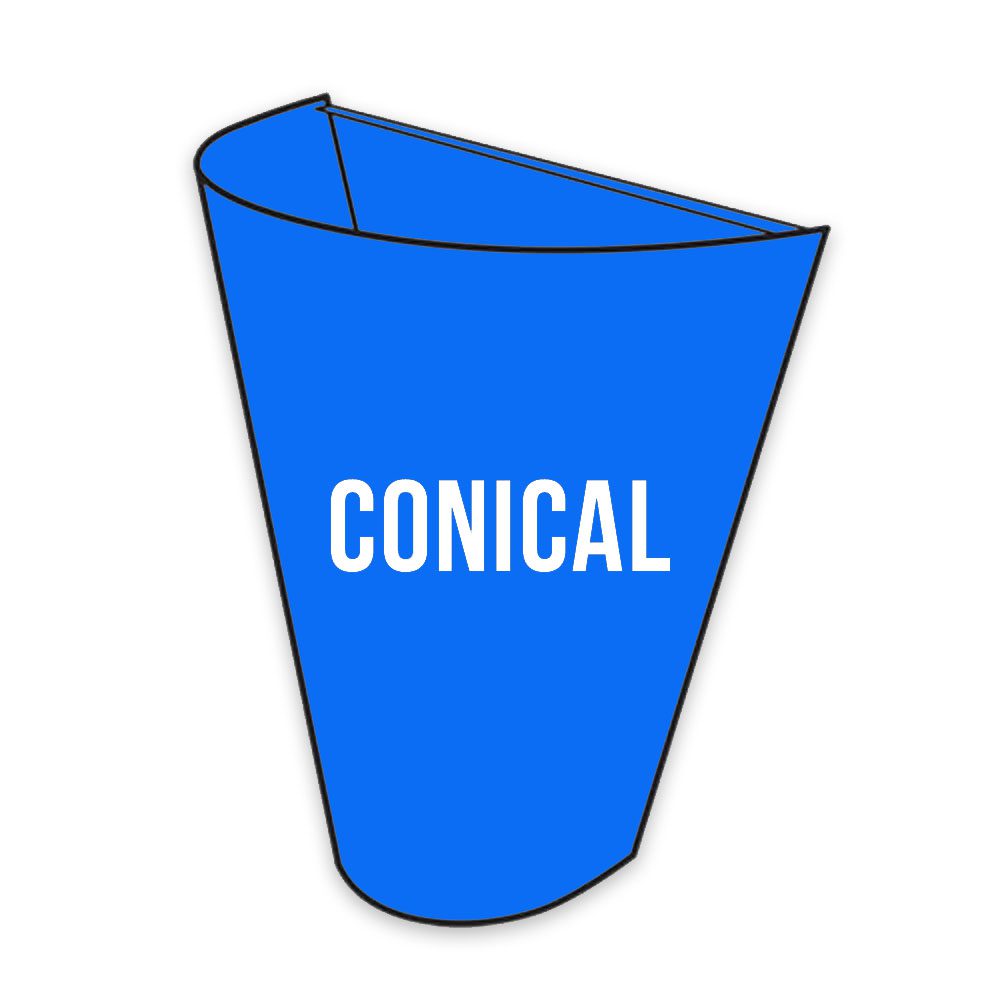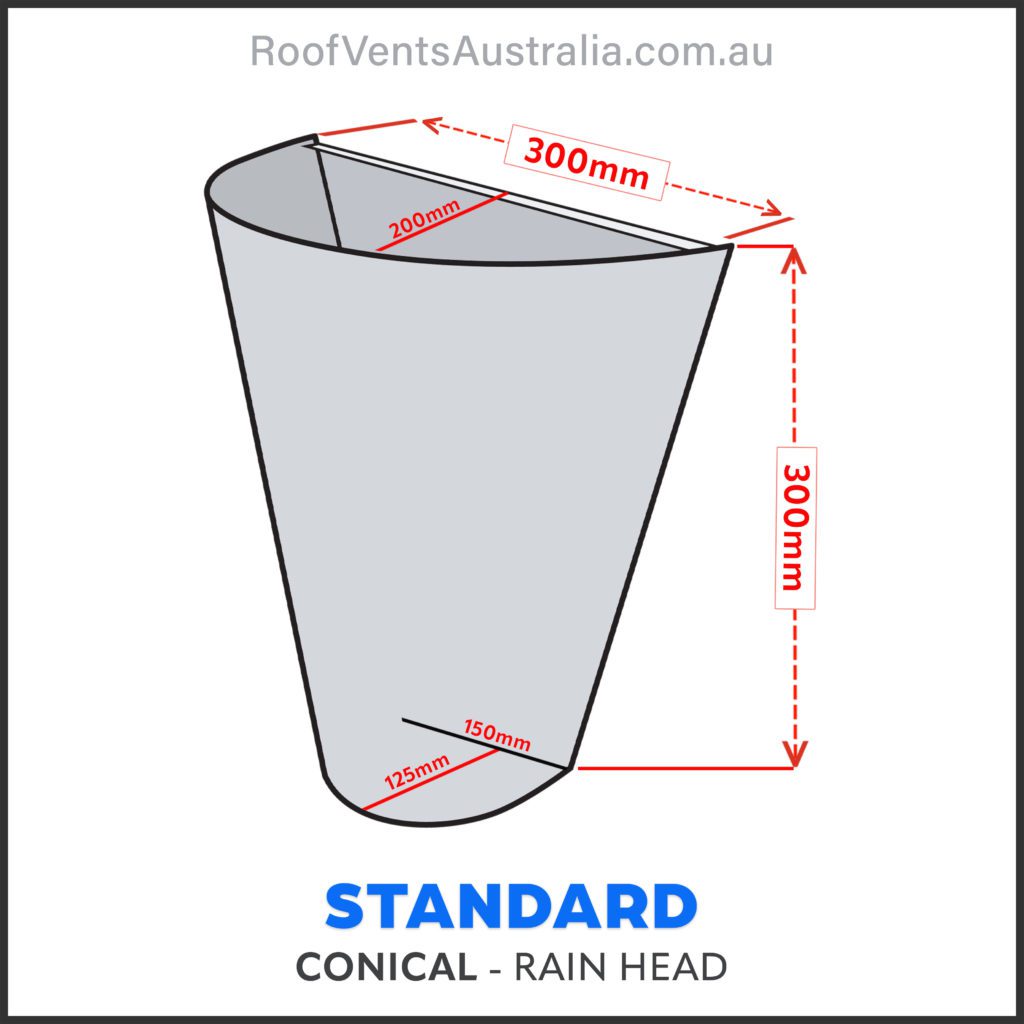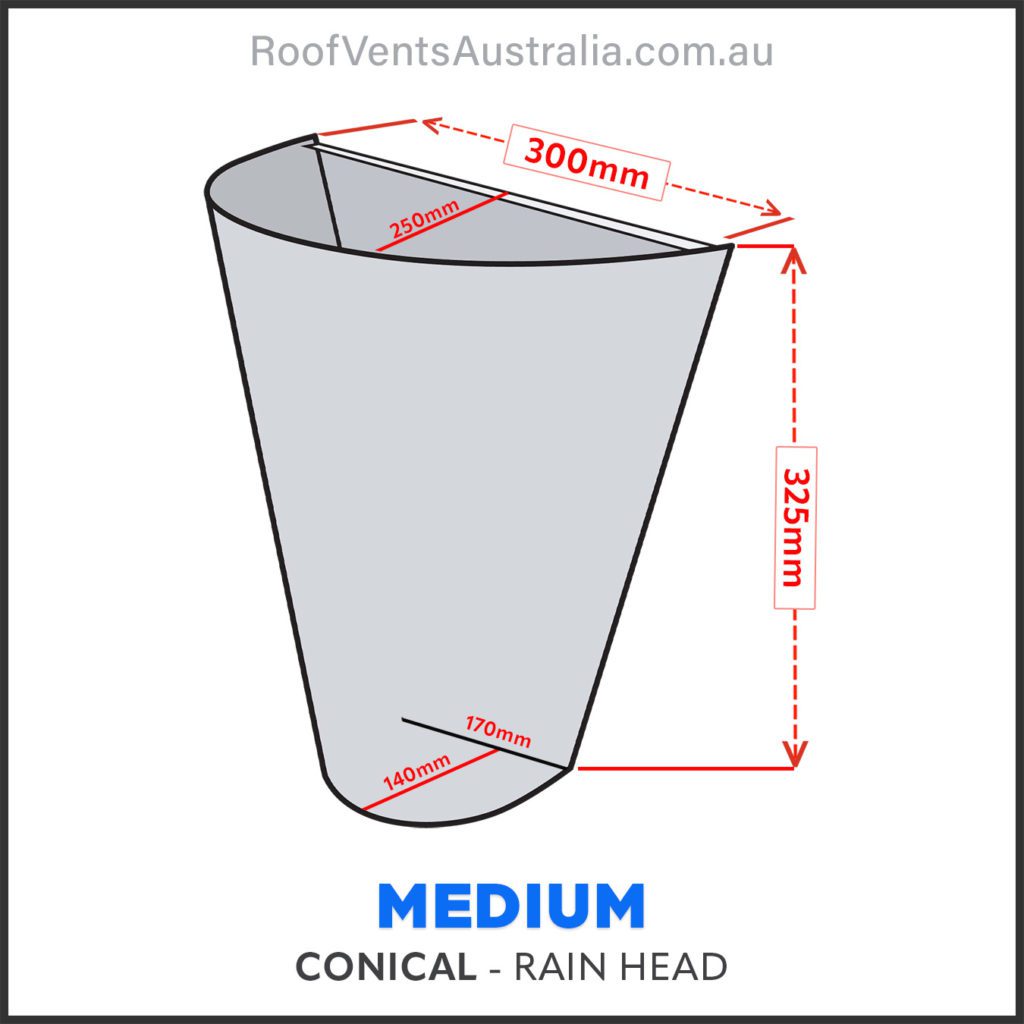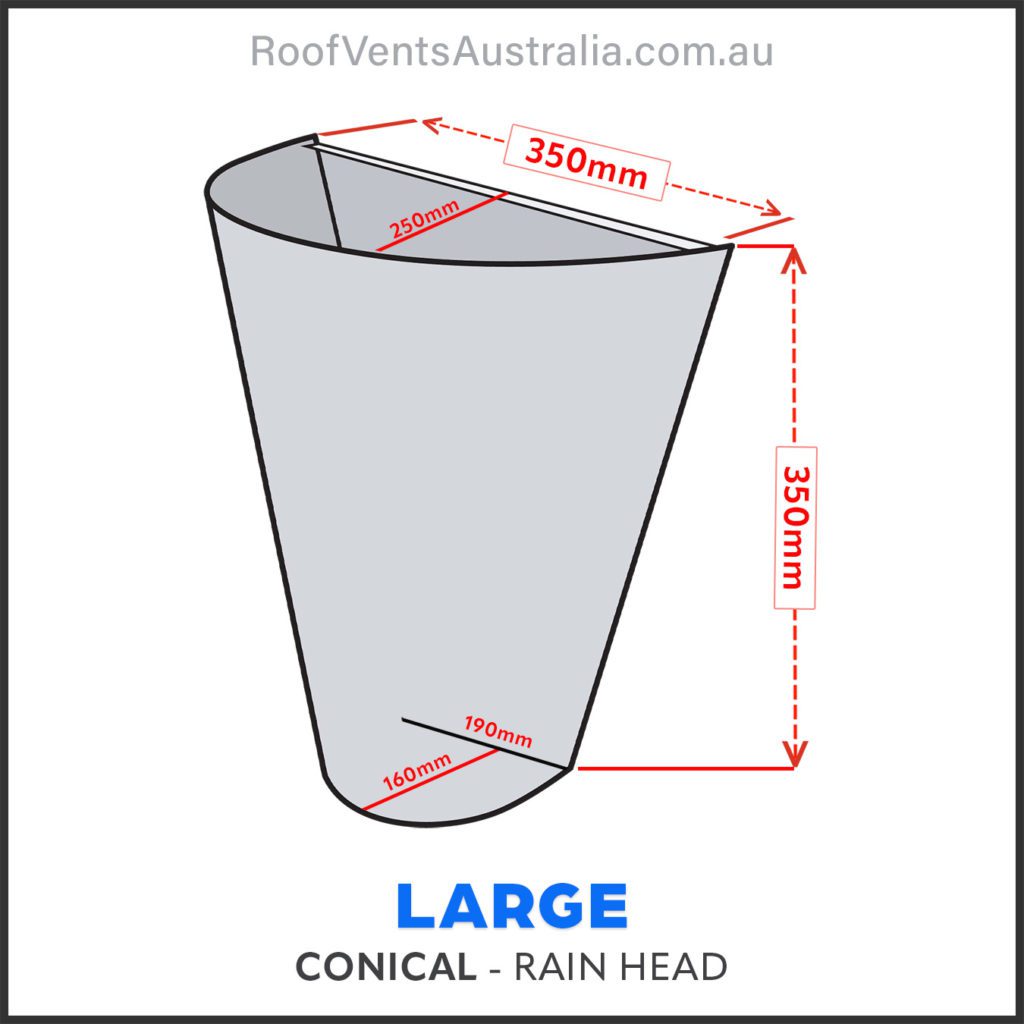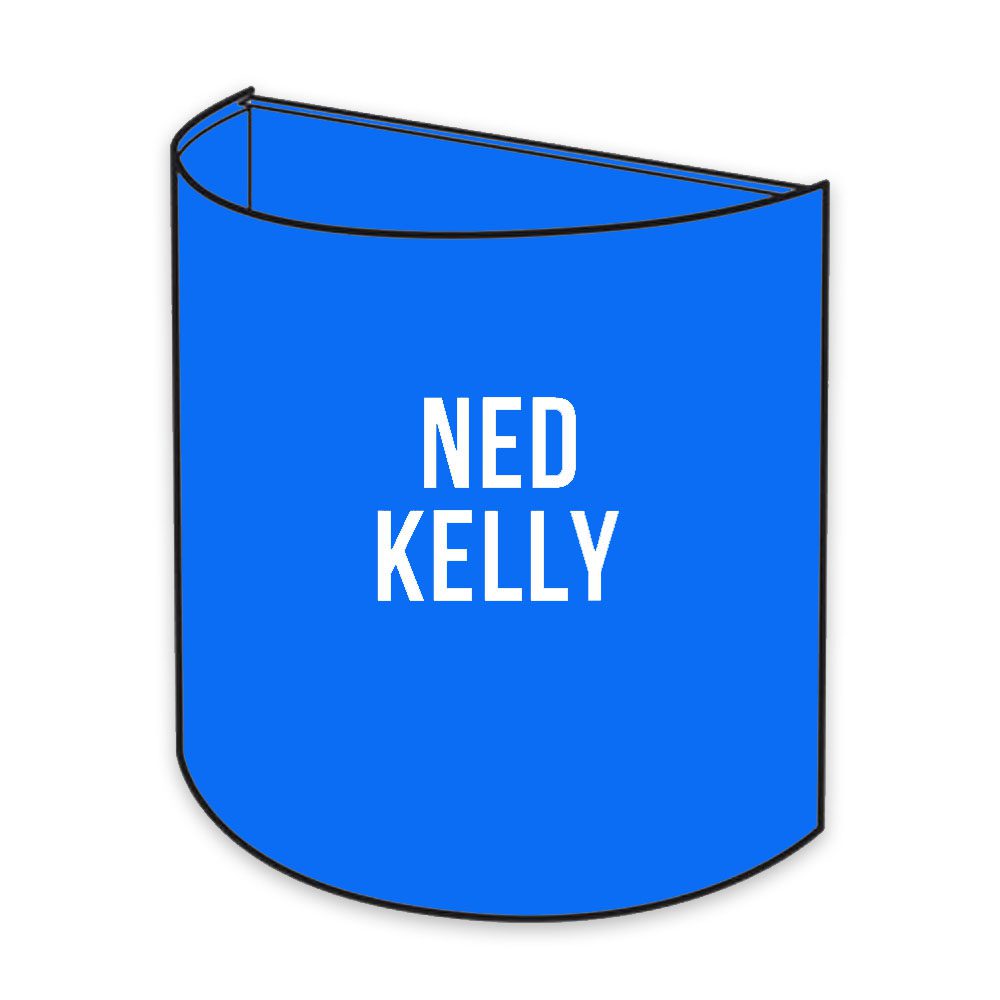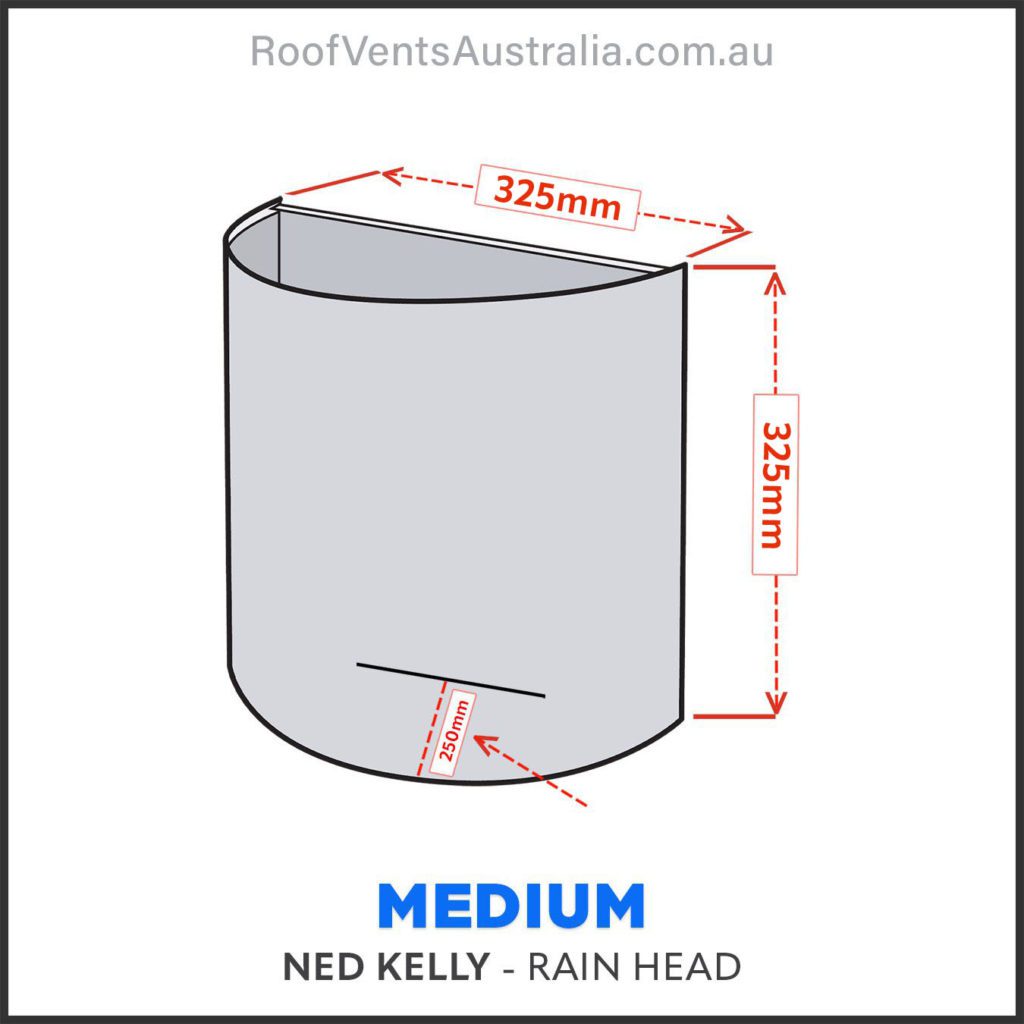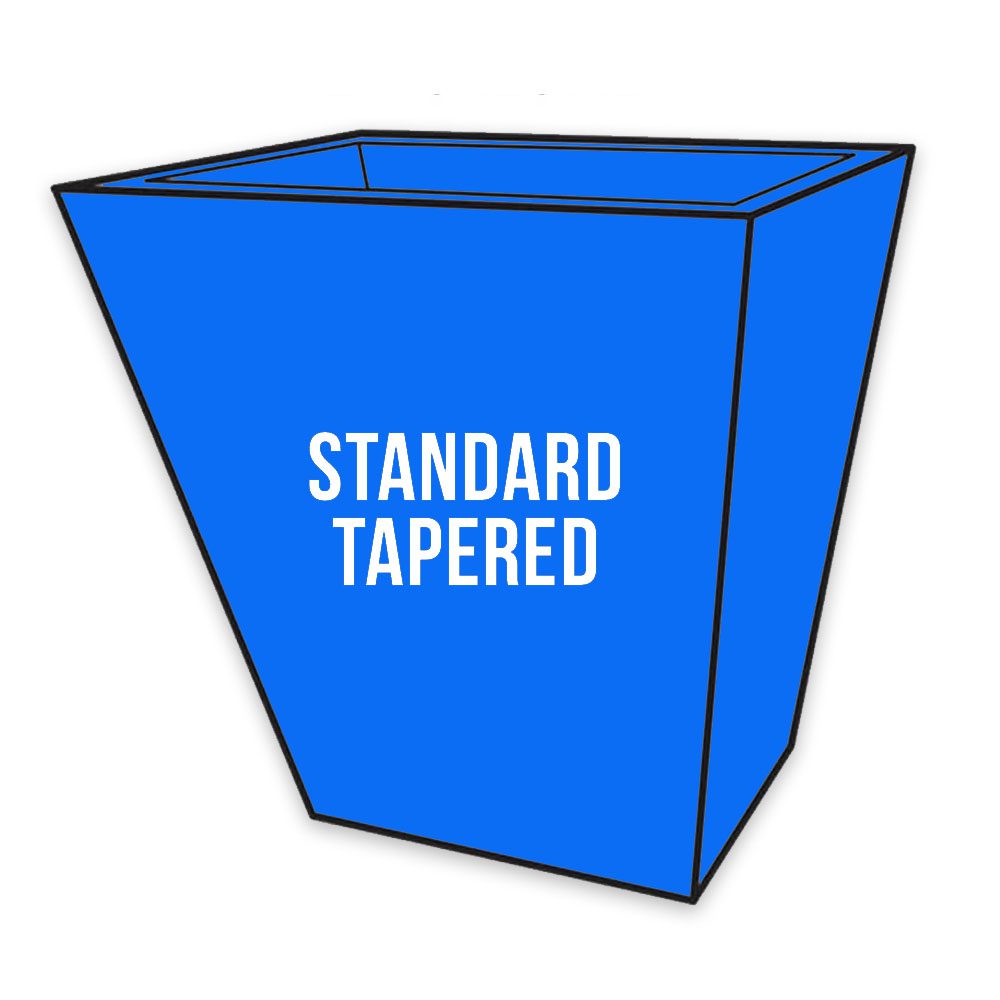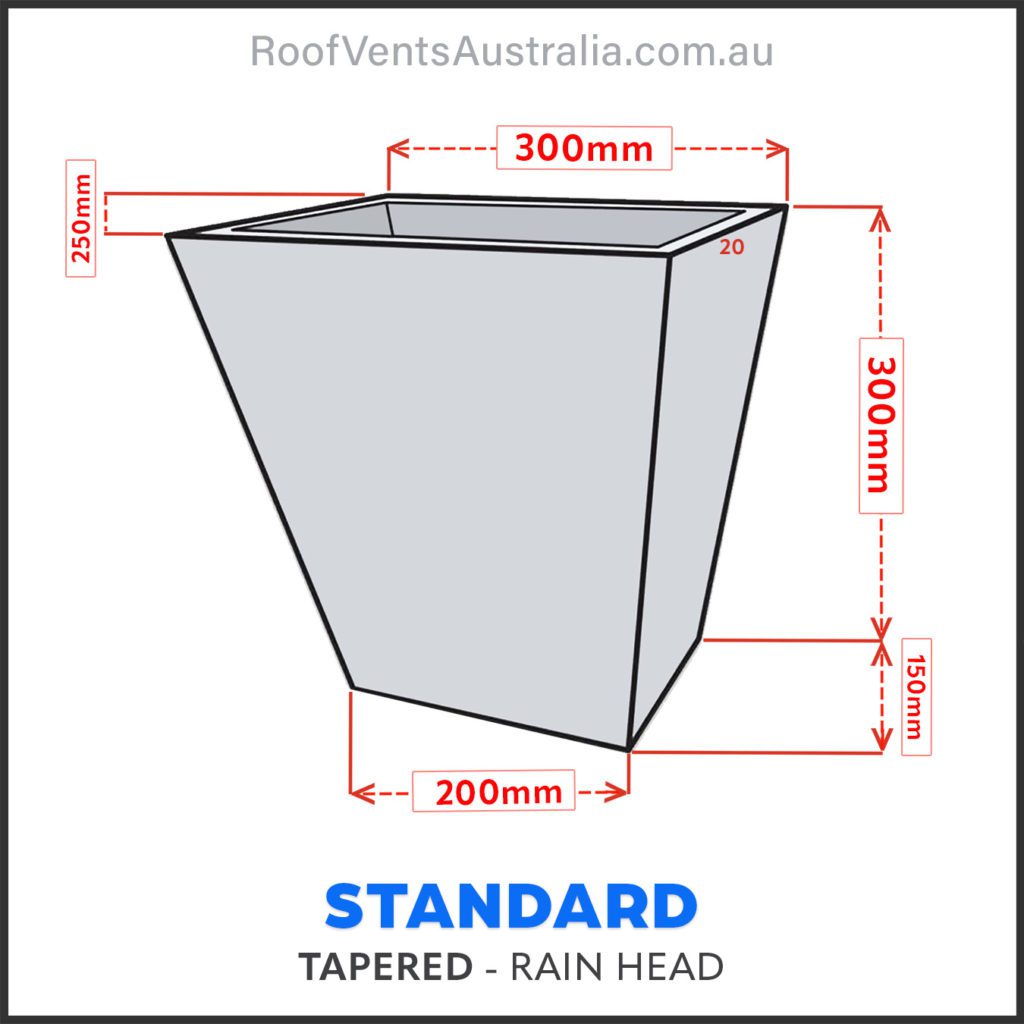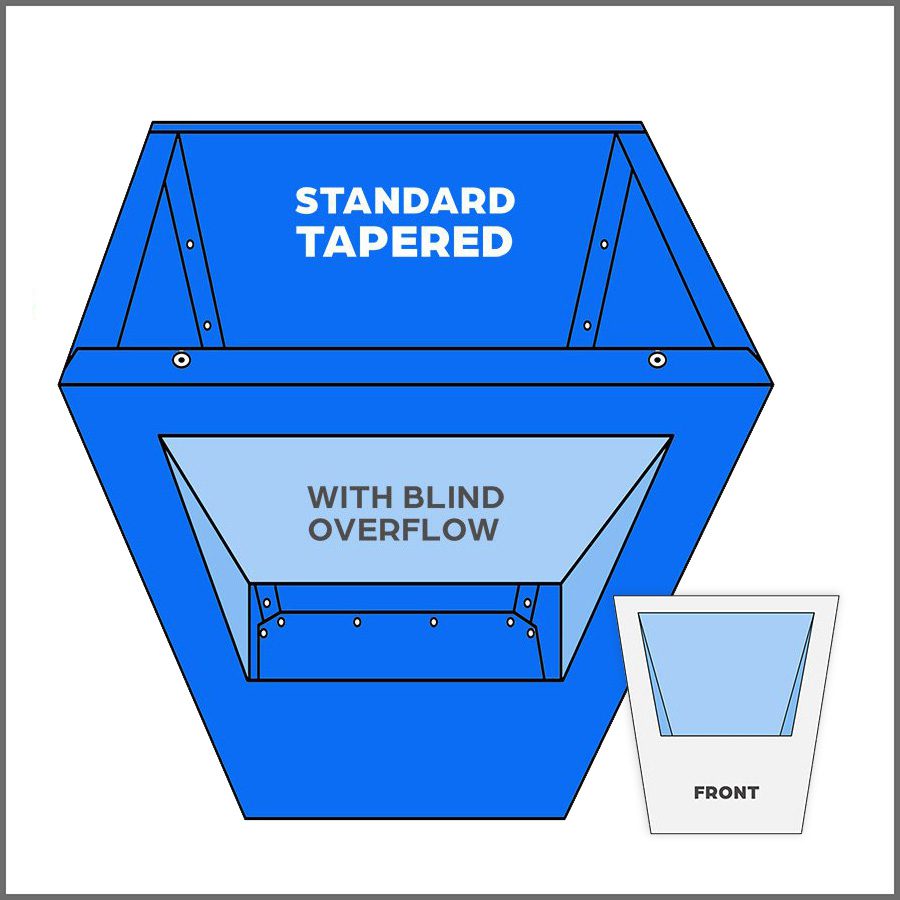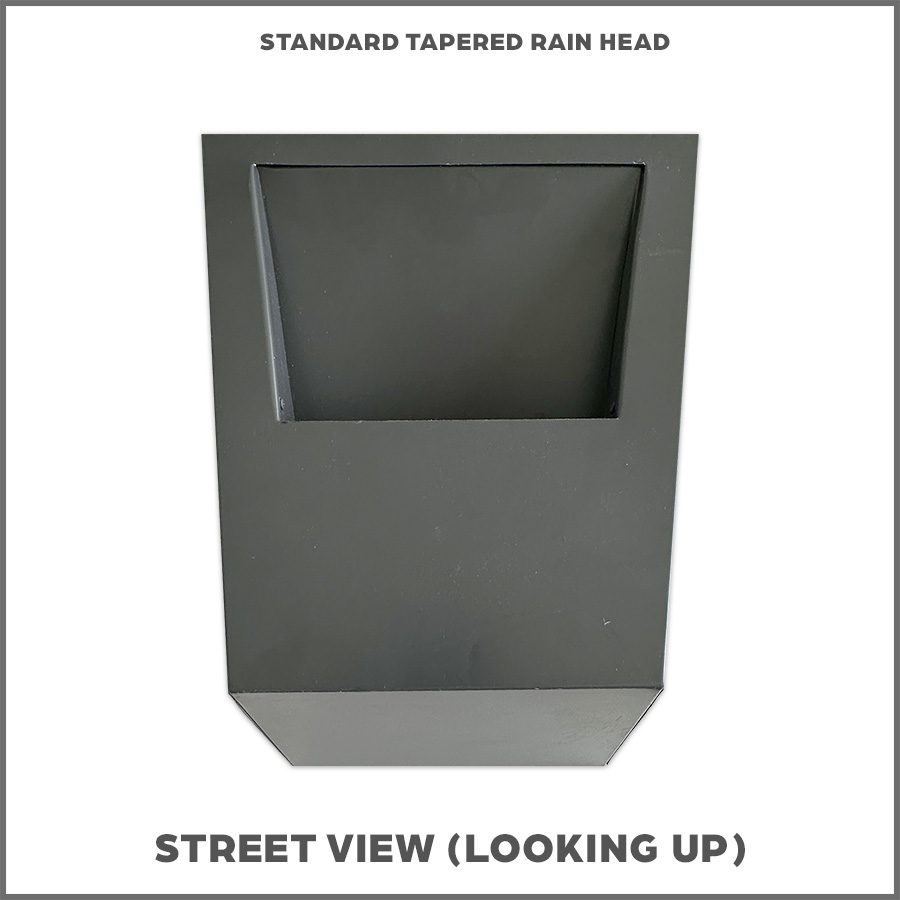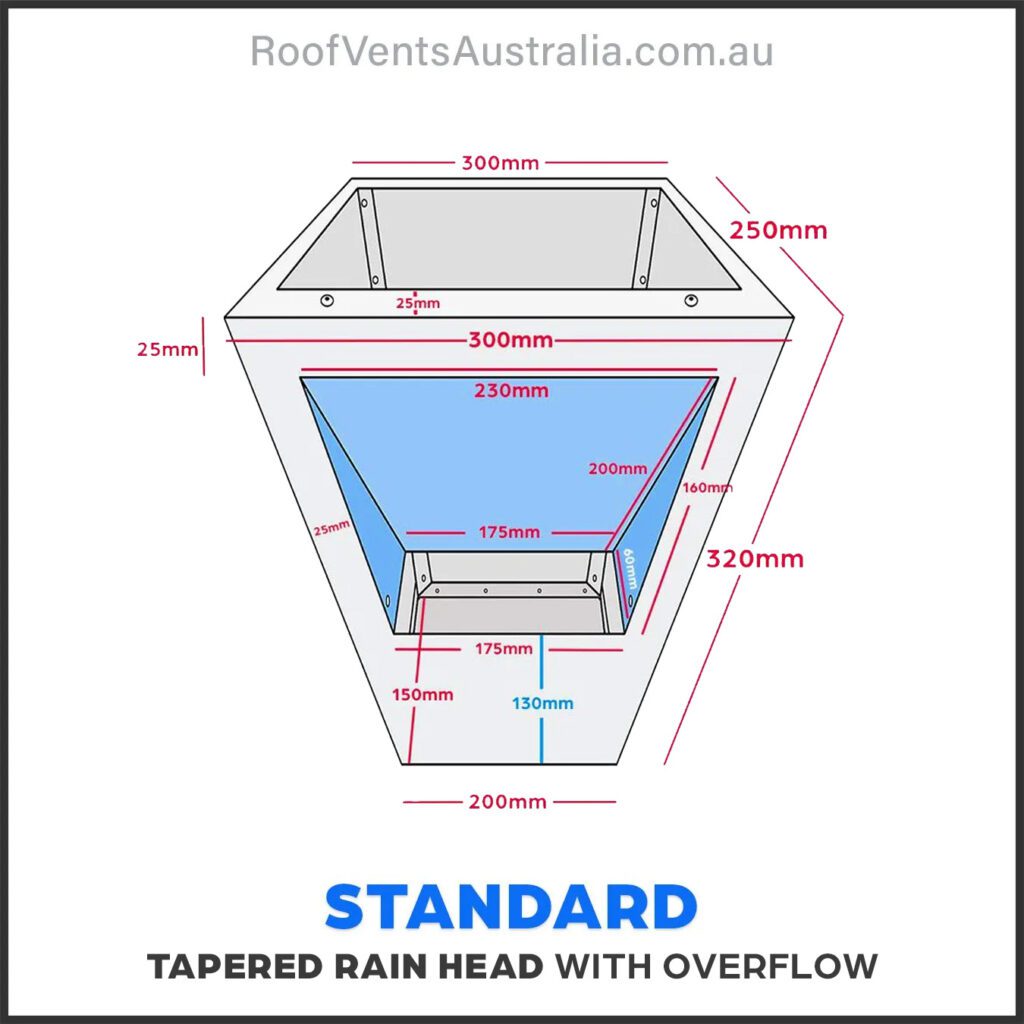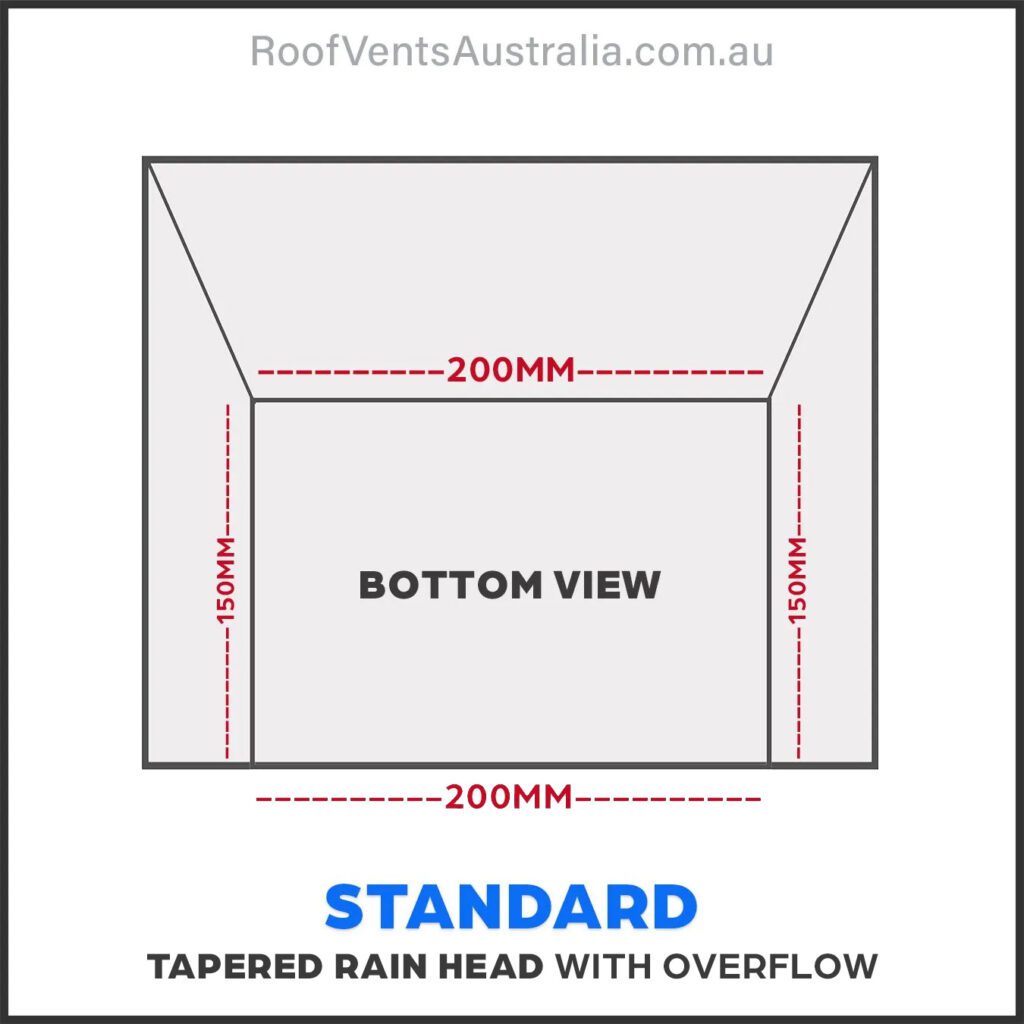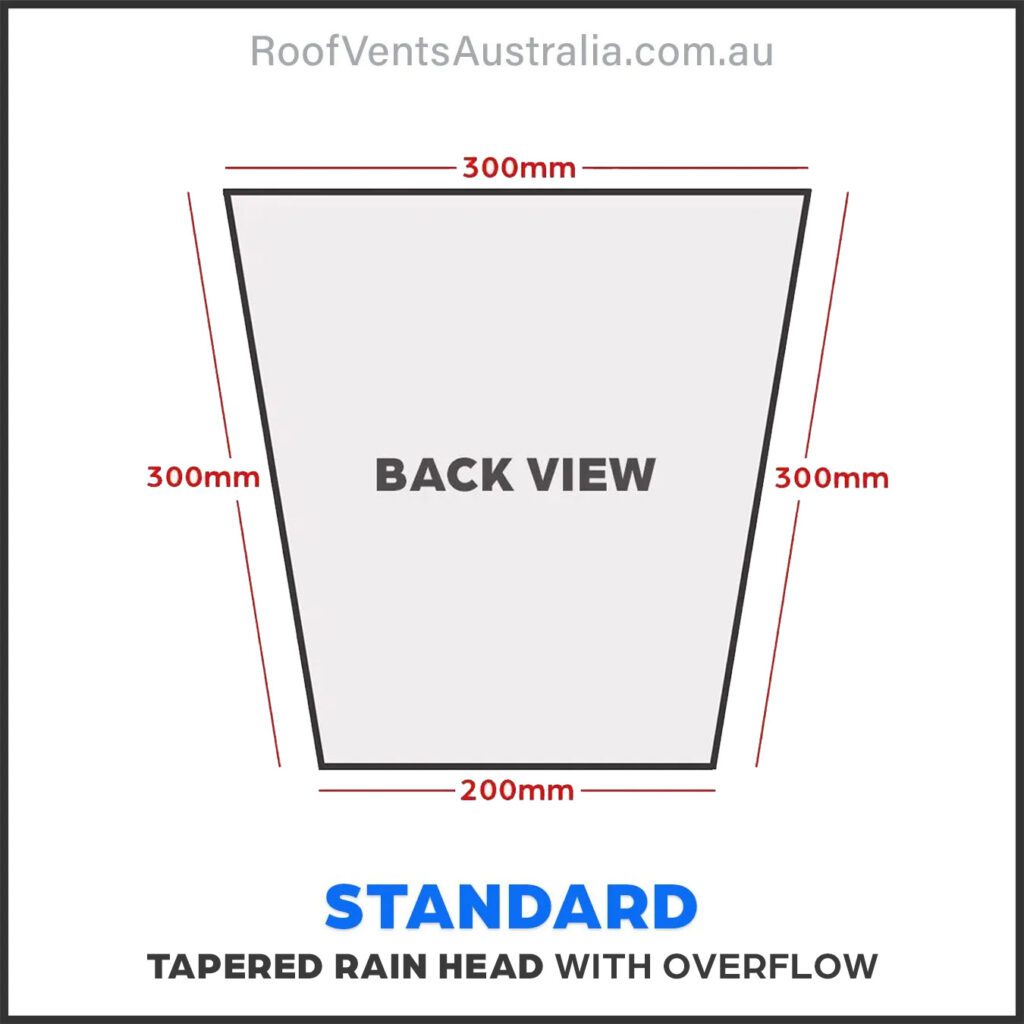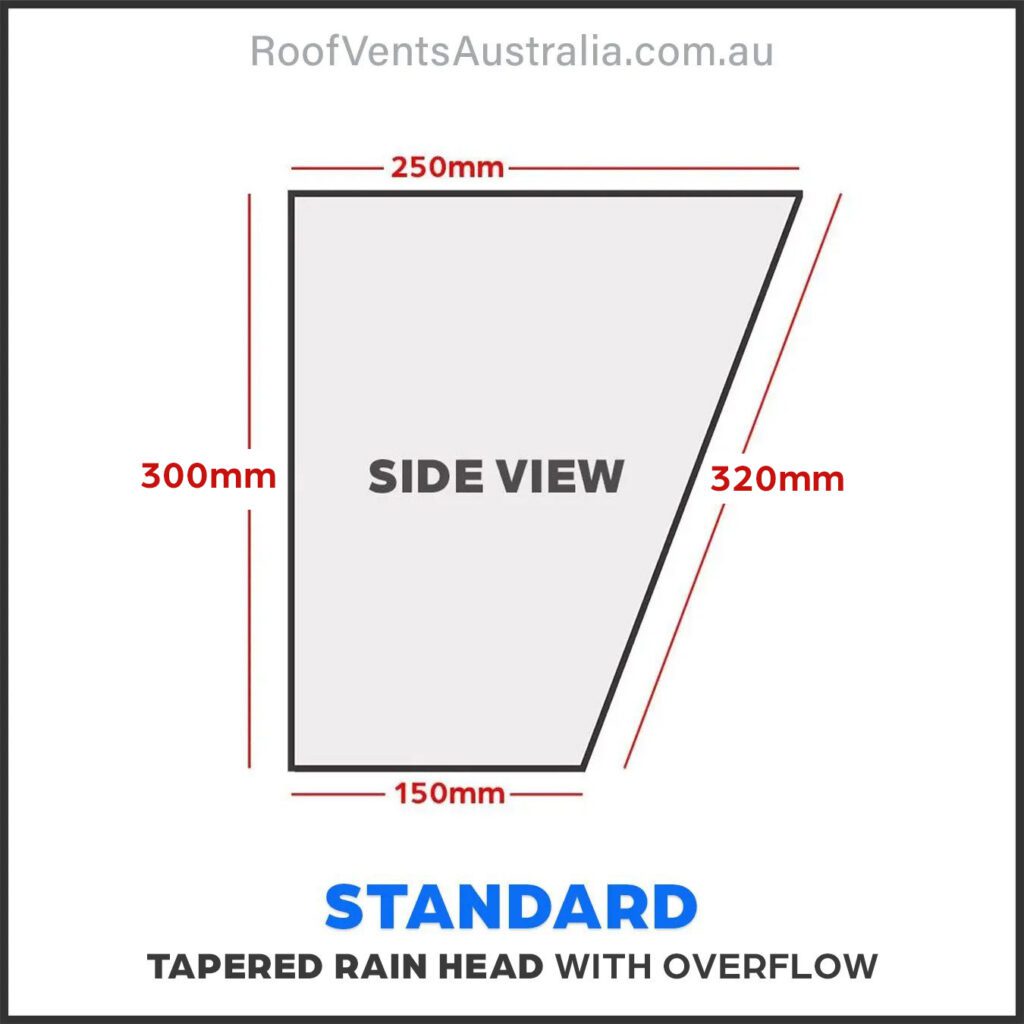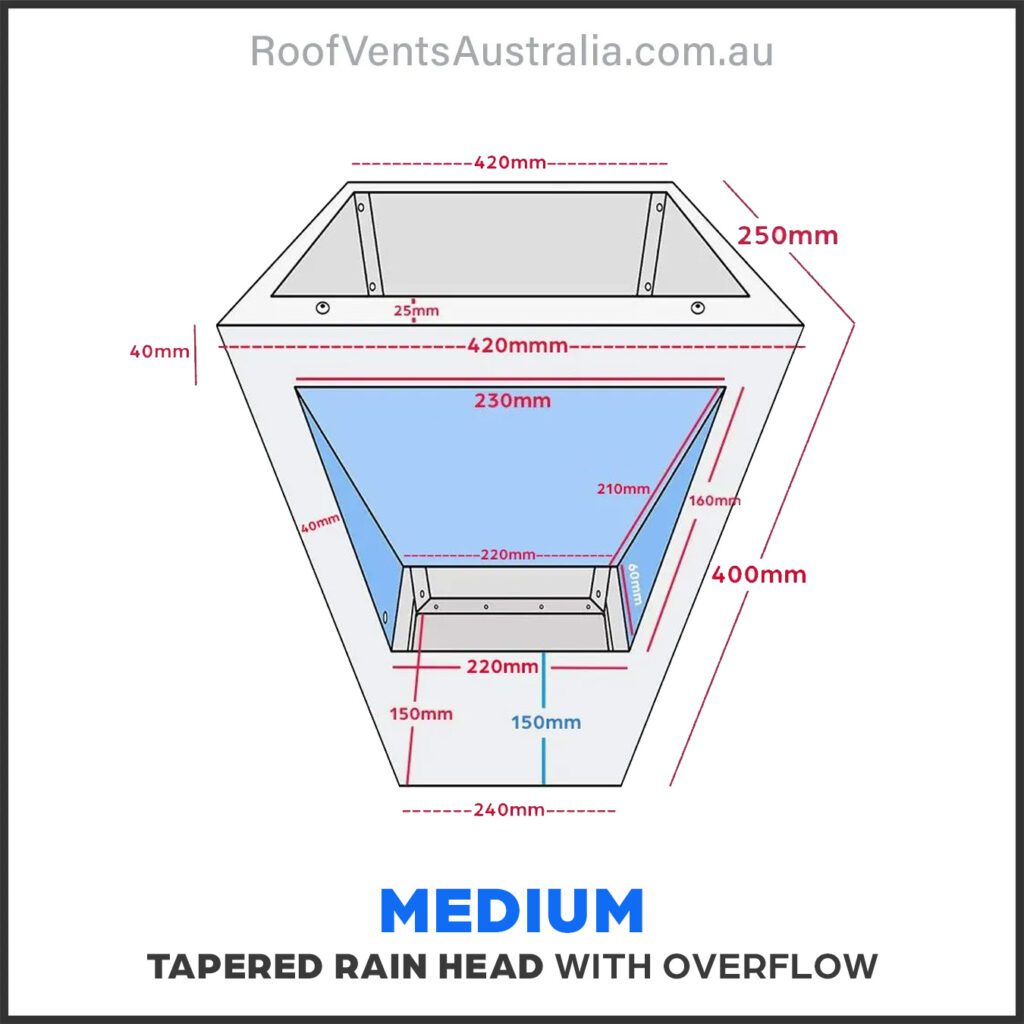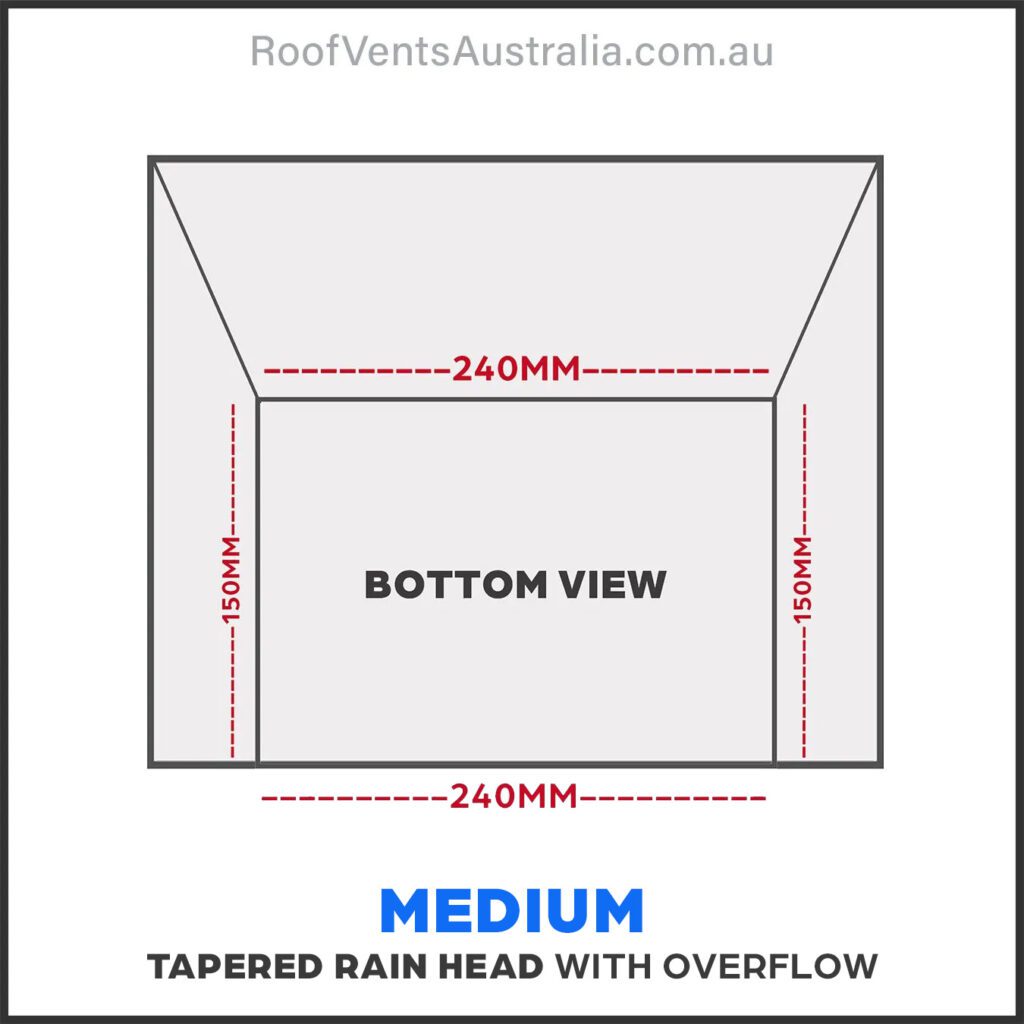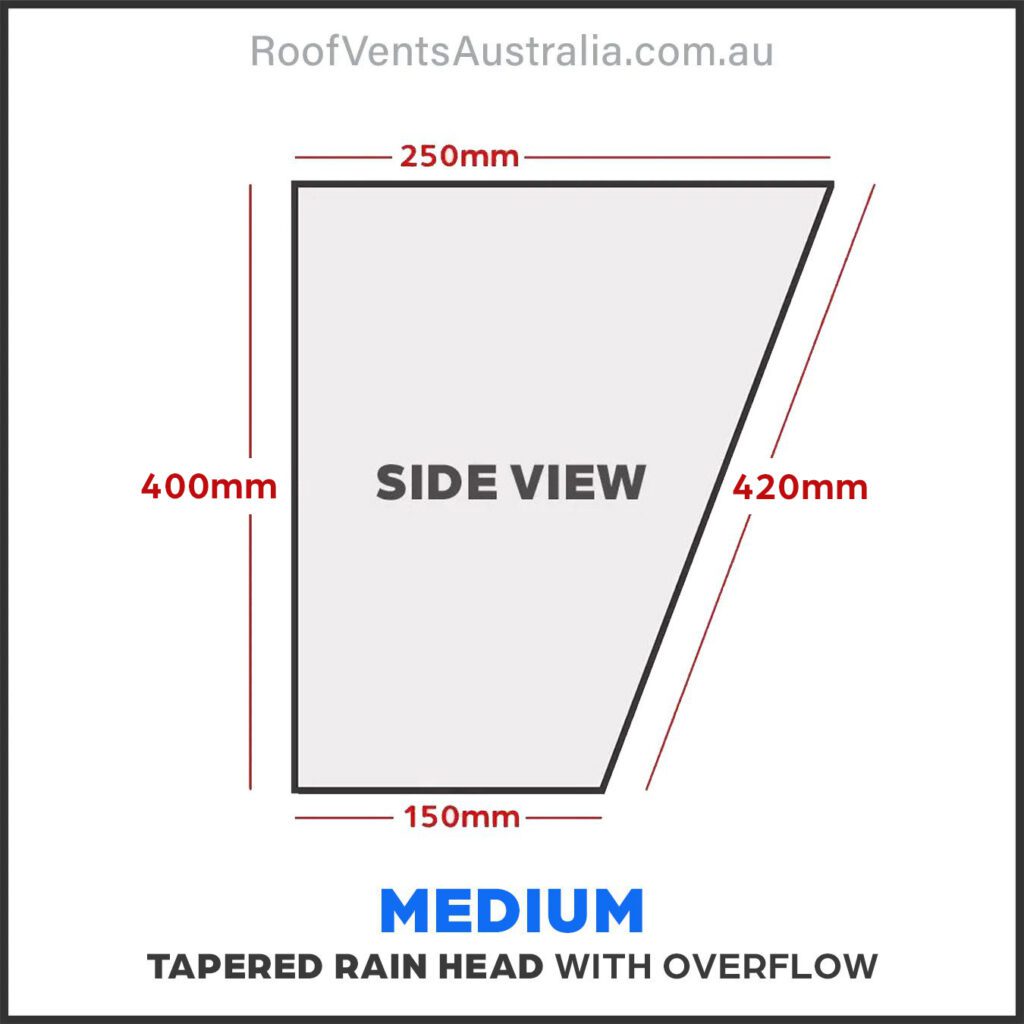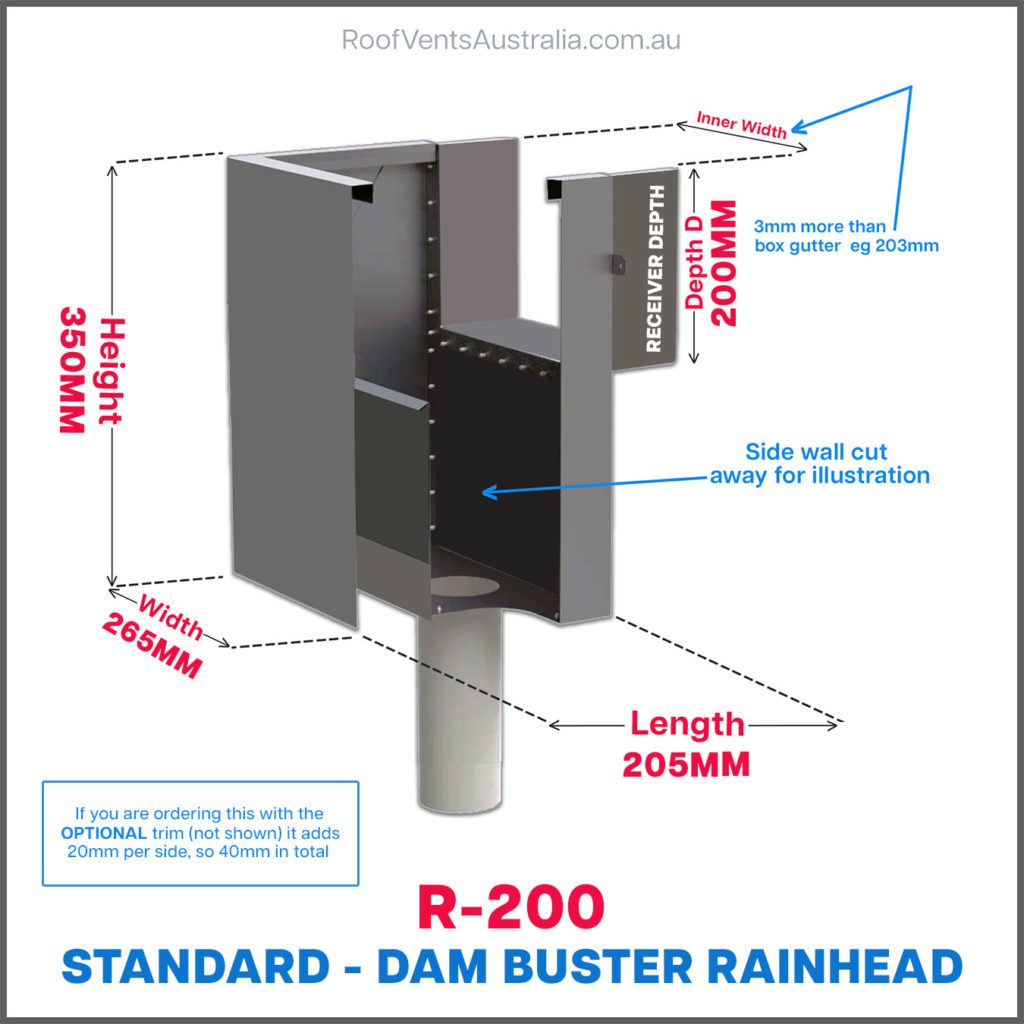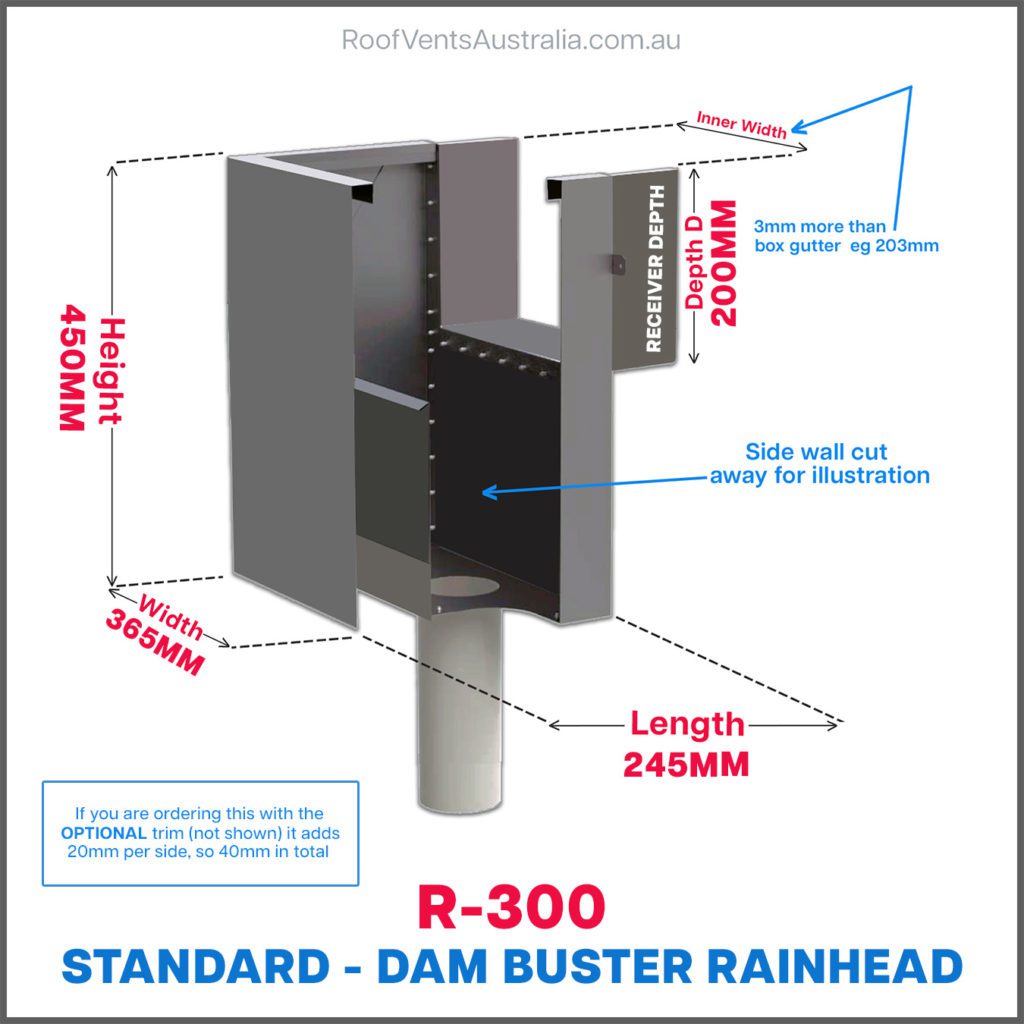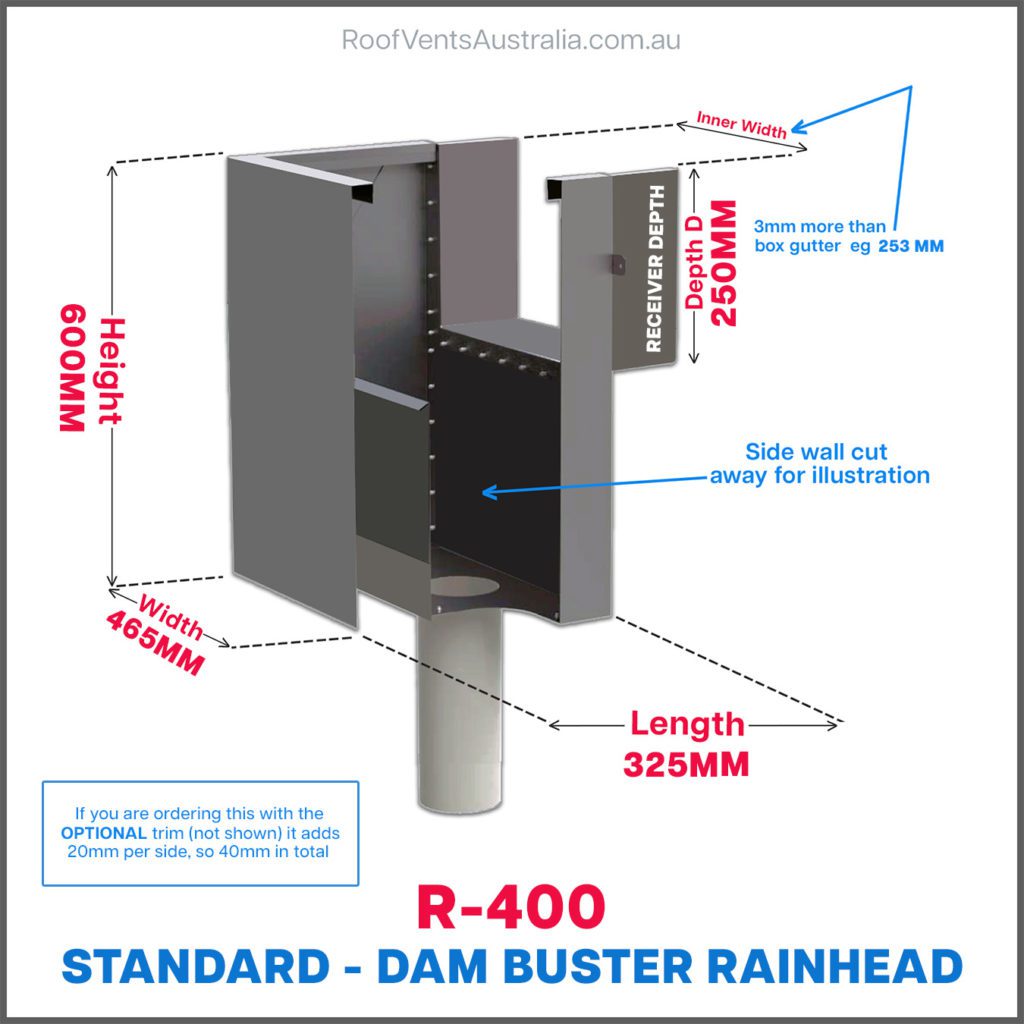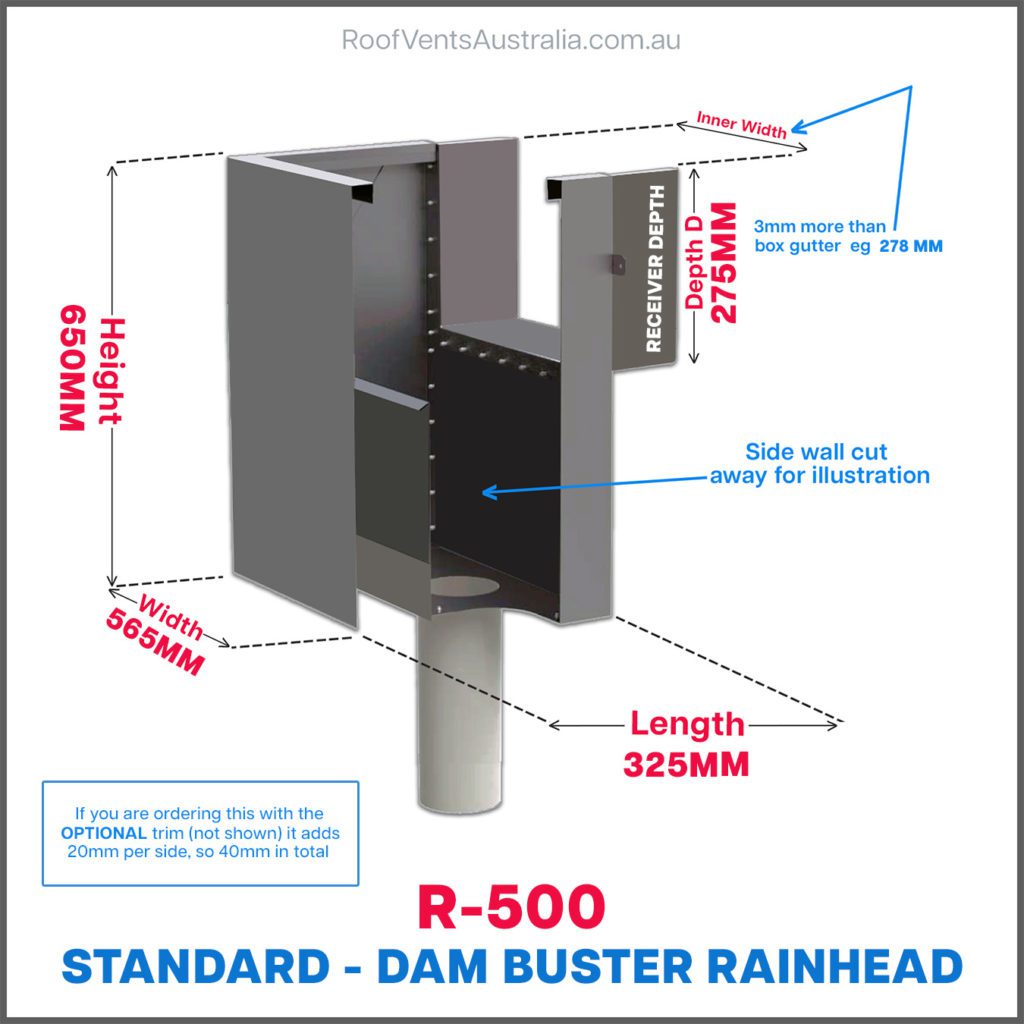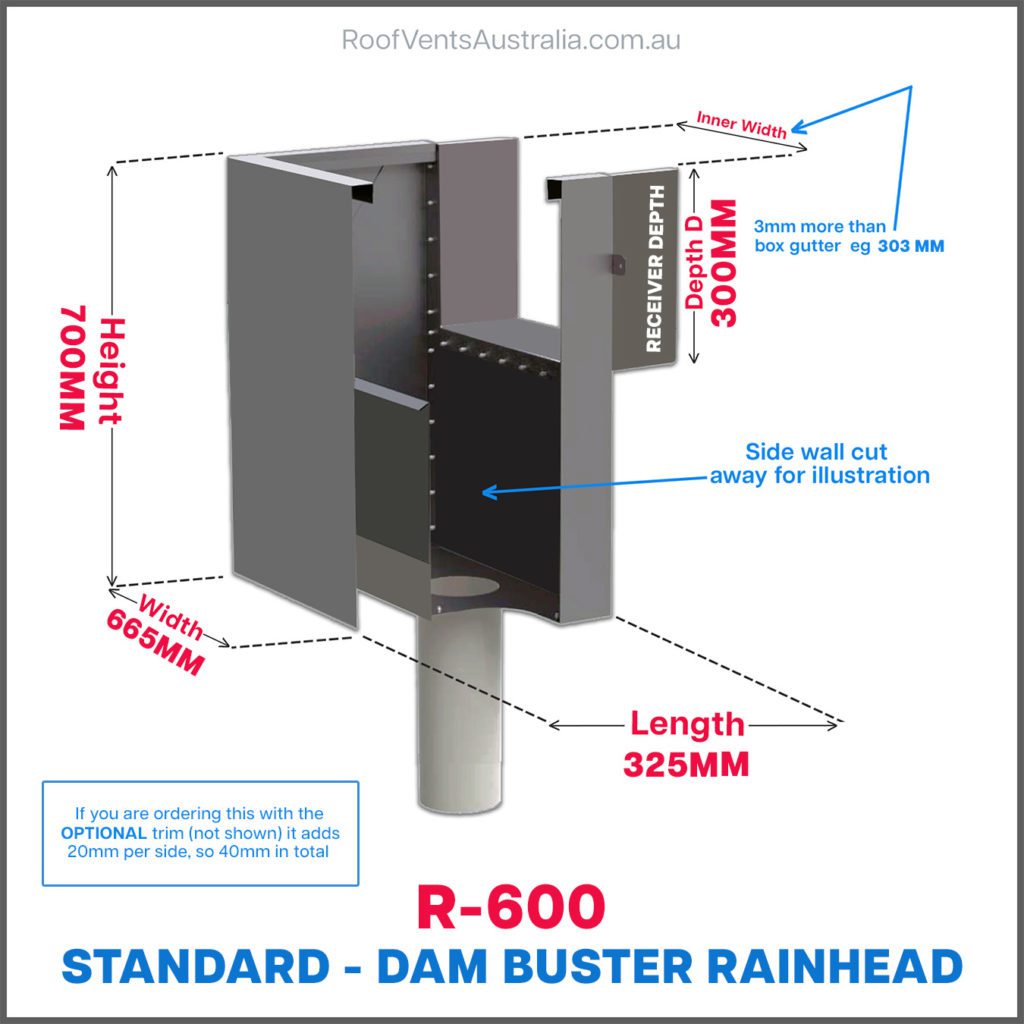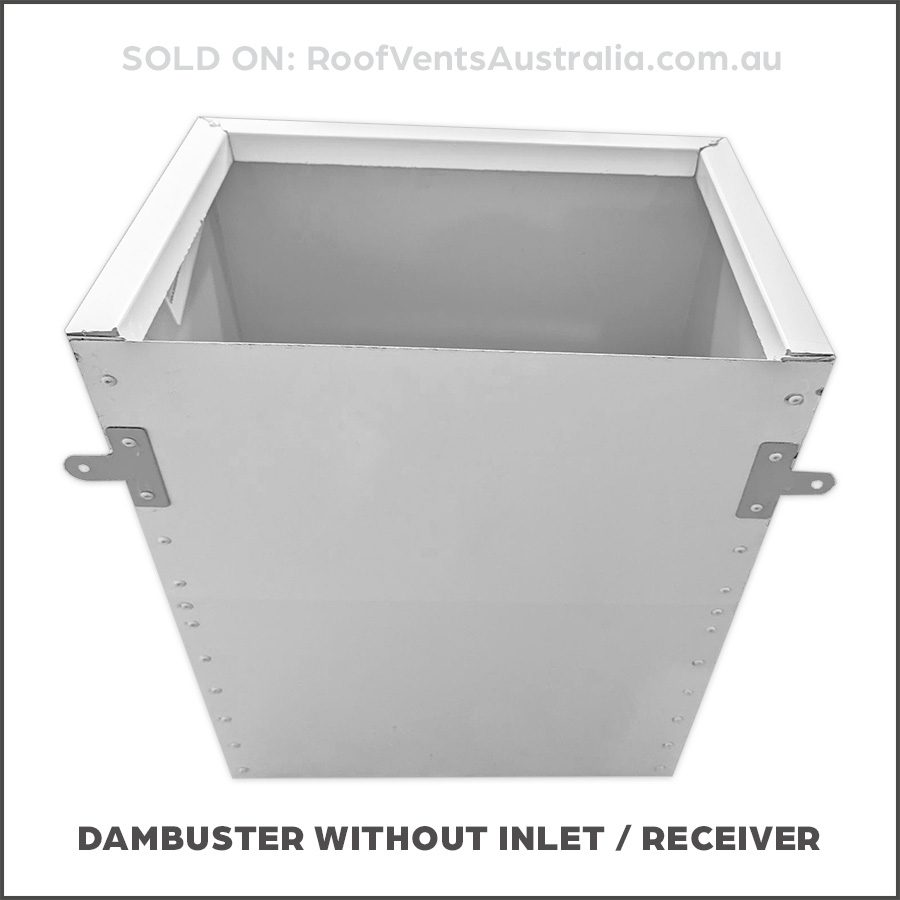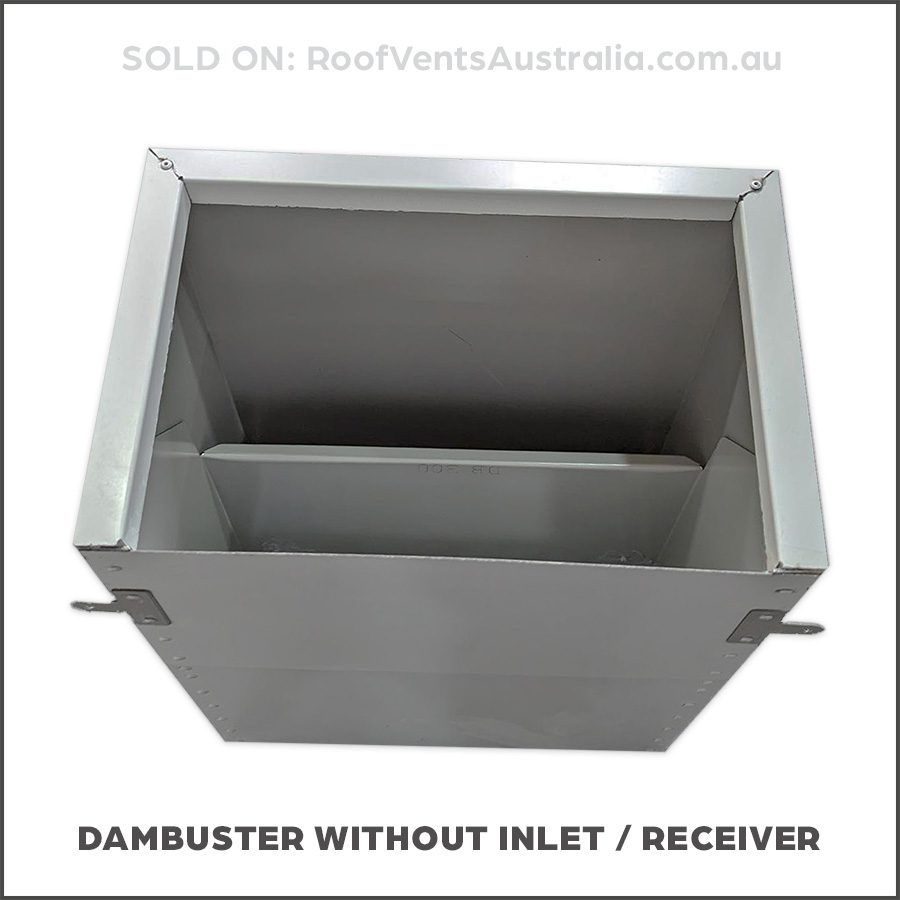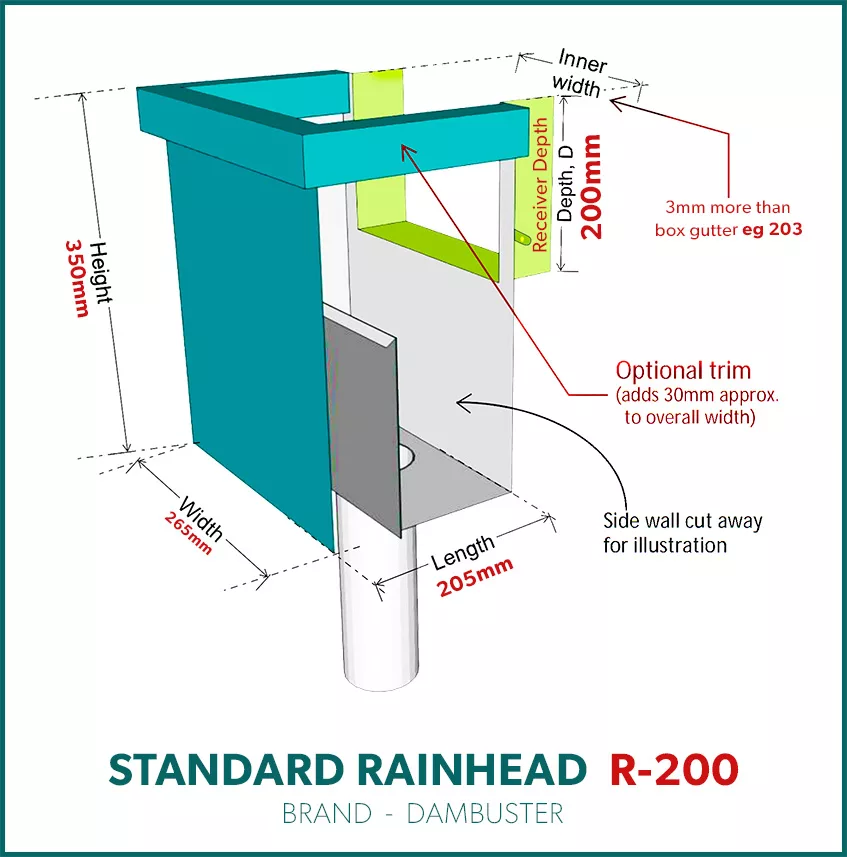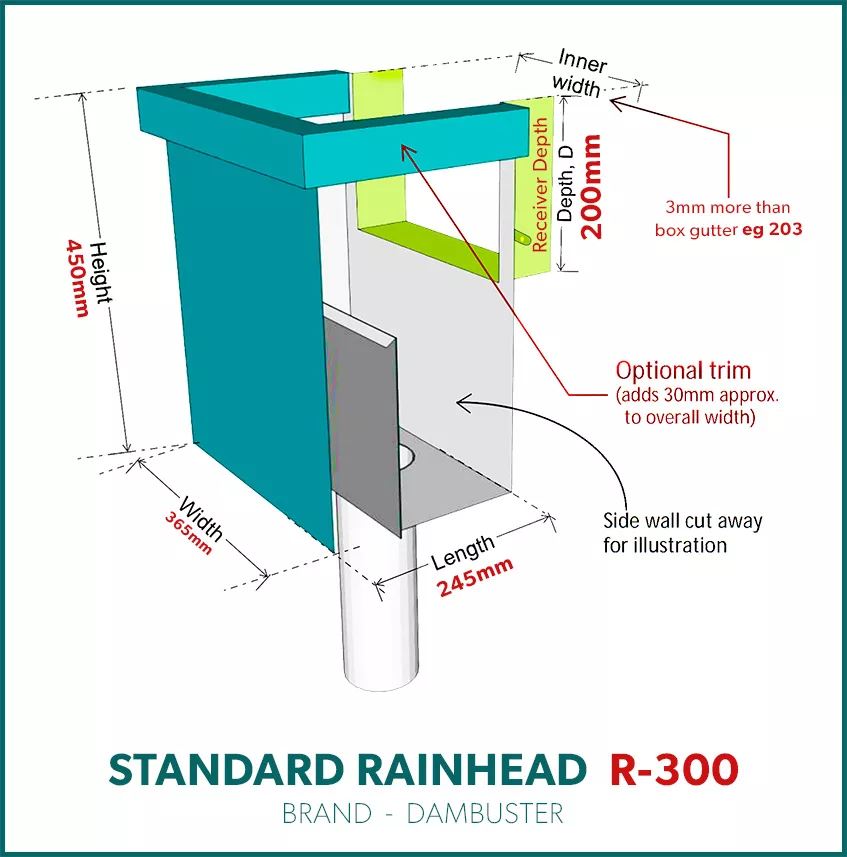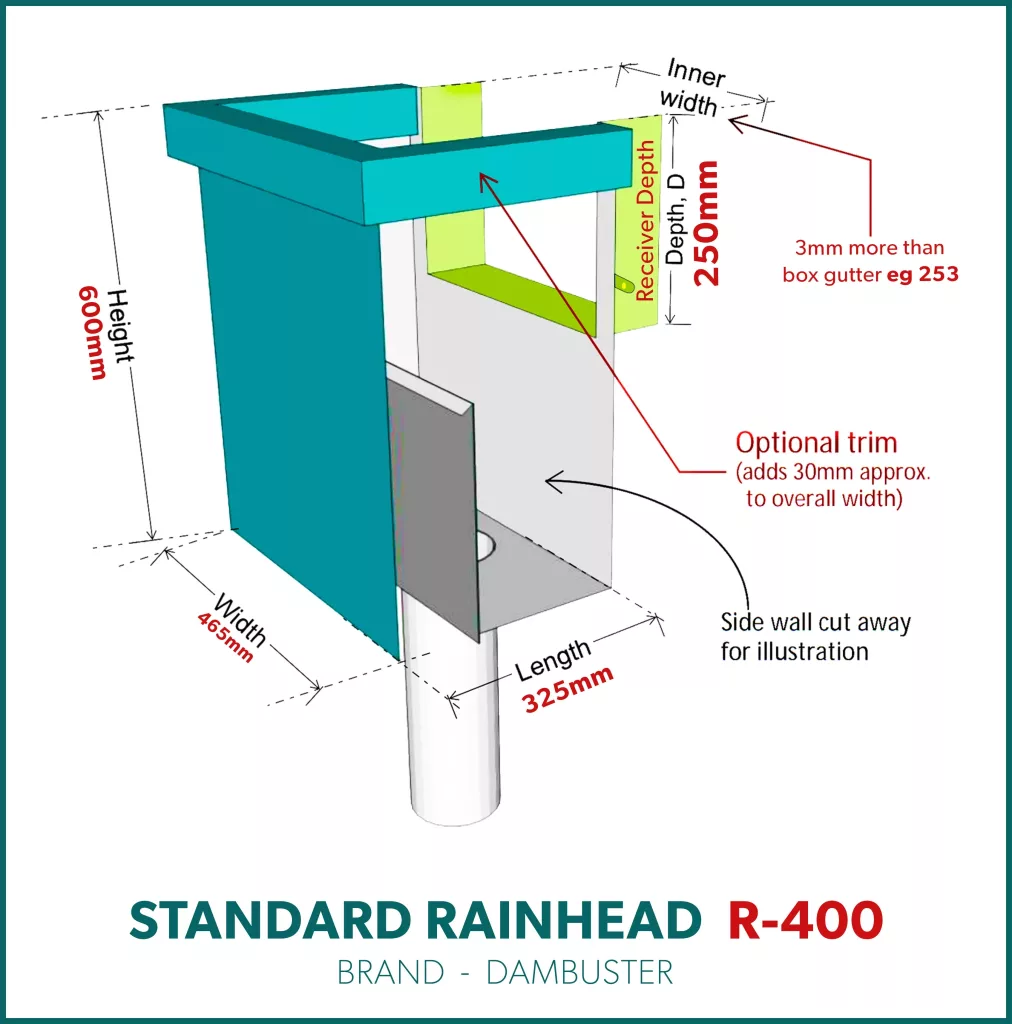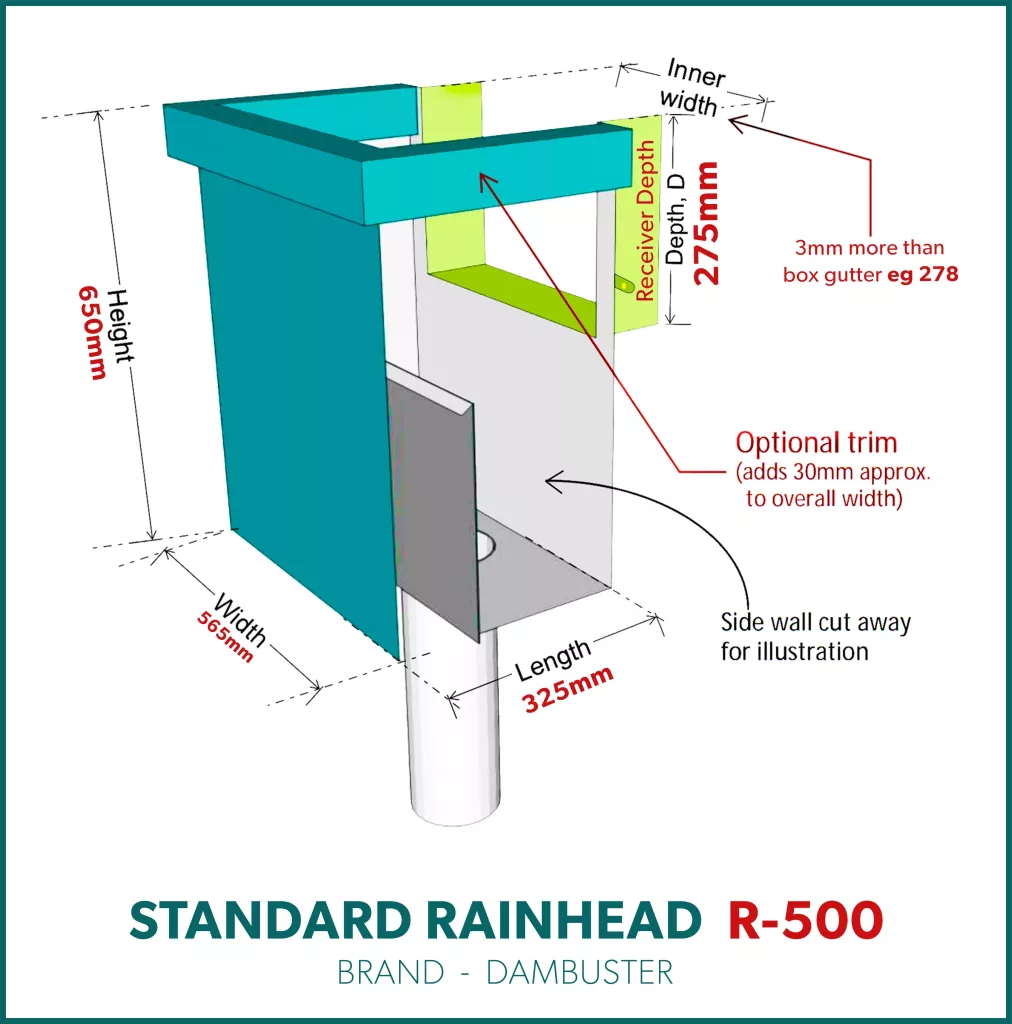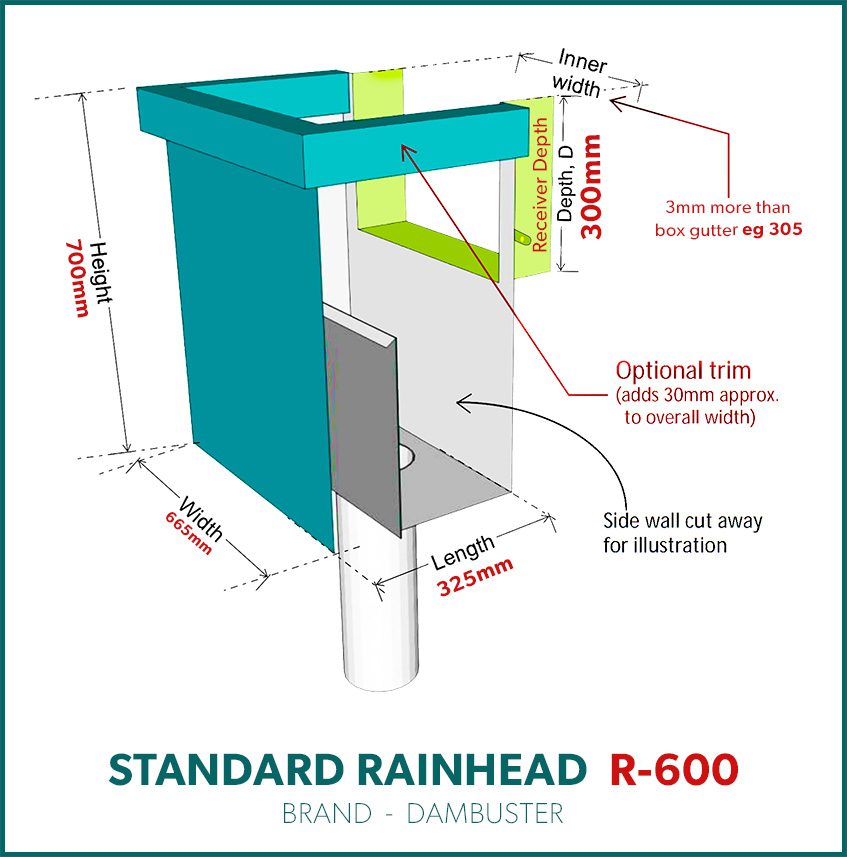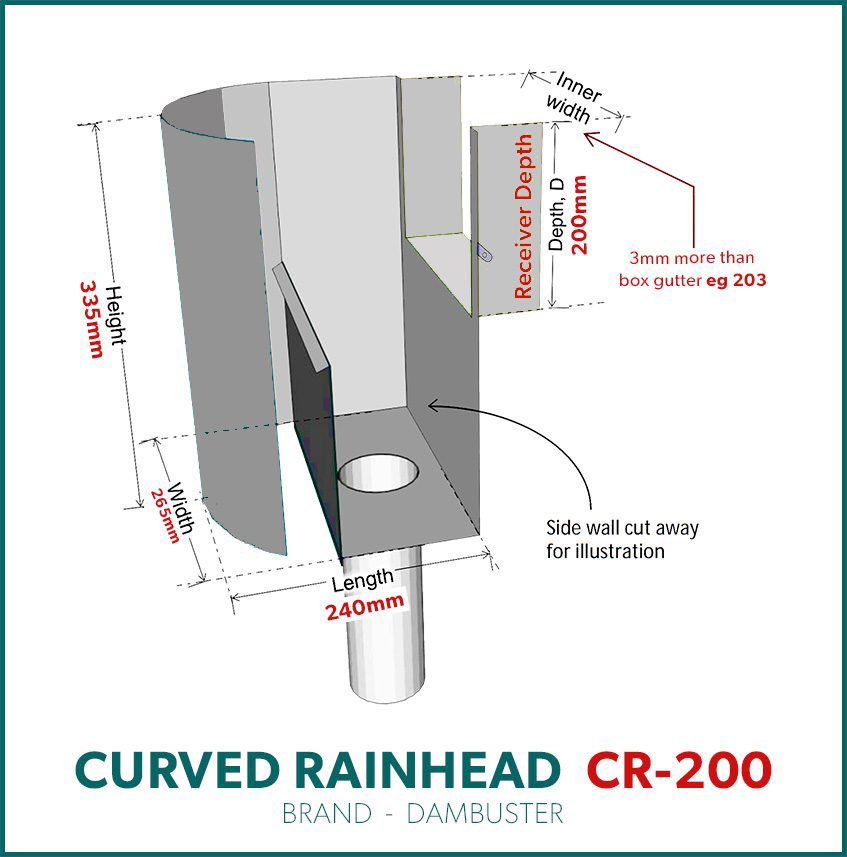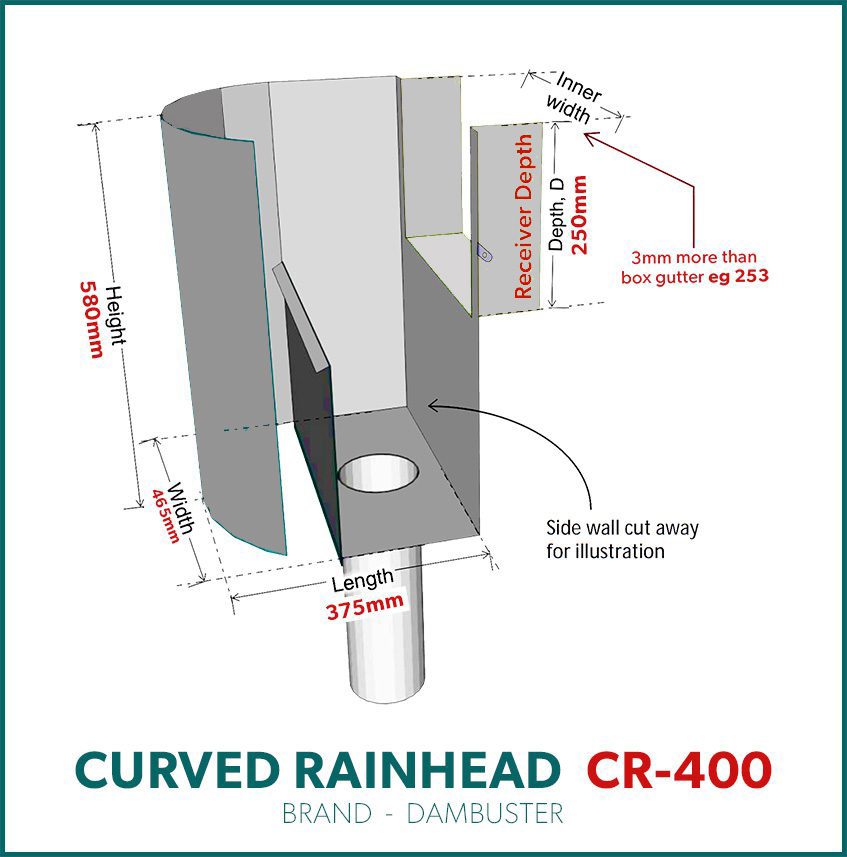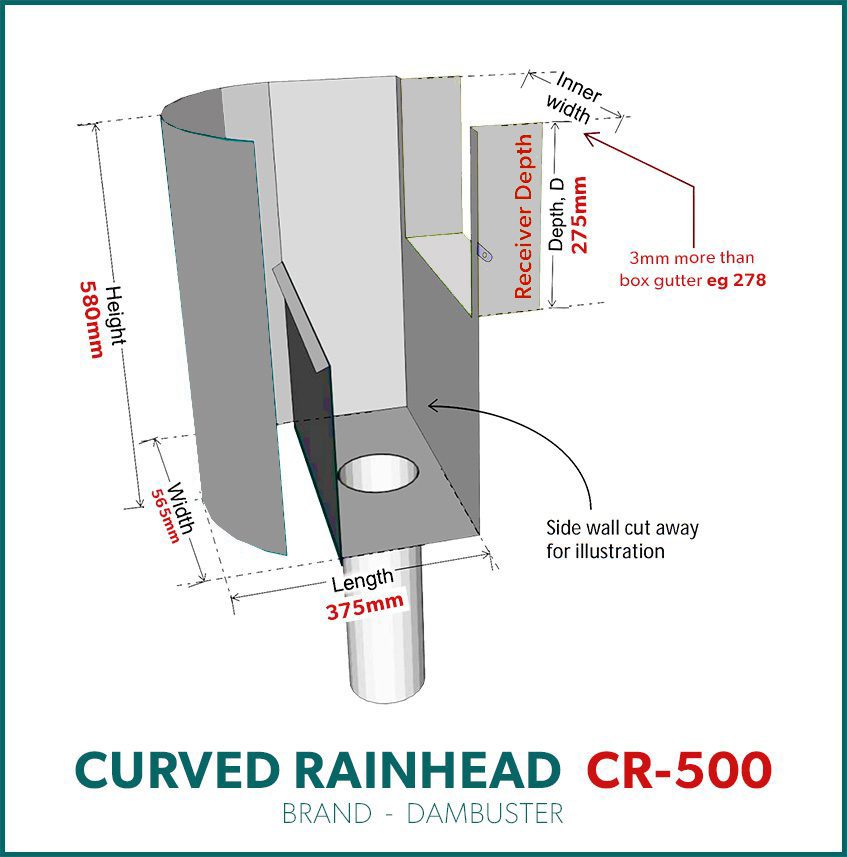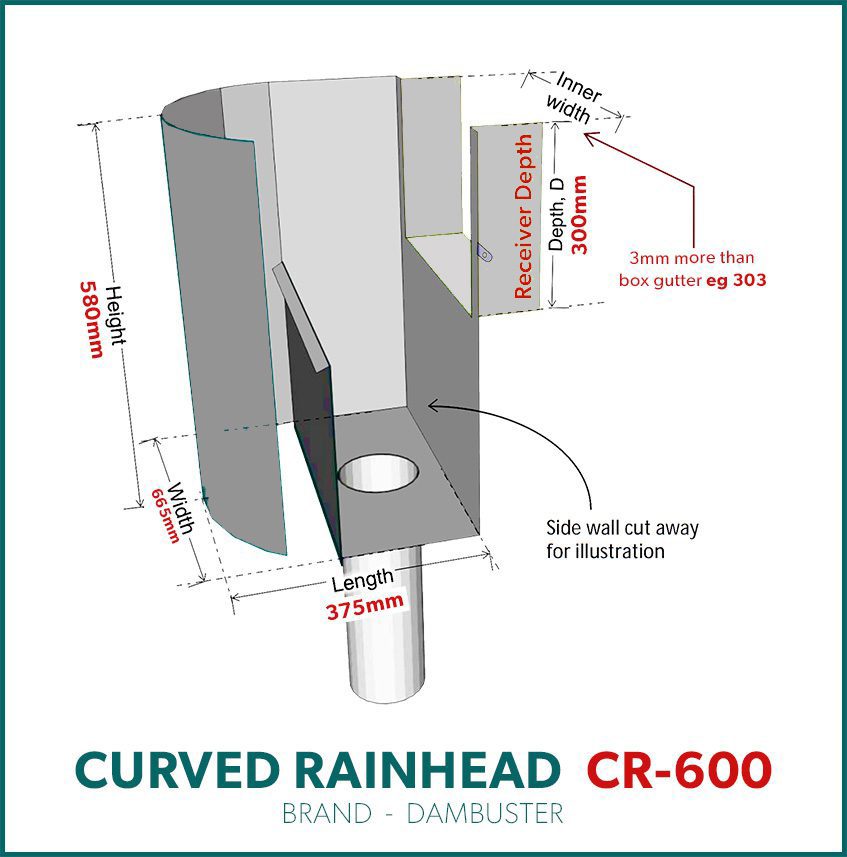Rain Heads & Sumps
SHIPPED FREE AUSTRALIA WIDE (Excluding NT)
Rectangle | Rectangle-Collared | Rectangle-Collared-Tapered | Rectangle-Tapered | Square | Long Tapered | Conical | Ned Kelly | Standard Tapered | Dam Buster Rain Heads | Gutter Sumps
Rainwater heads made In-House
ALL PRICES INCLUDE TAX AND FREE SHIPPING AUSTRALIA WIDE (Excluding NT)
RAIN HEADS WITH OVERFLOW (DESIGN REGISTRATION PENDING)
STANDARD SIZE – RAIN HEAD WITH OVERFLOW
MEDIUM SIZE – RAIN HEAD WITH OVERFLOW
Order in Zincalume or Colorbond™
Dam Buster Rain Heads
ALL PRICES INCLUDE GST AND FREE SHIPPING AUSTRALIA WIDE (Excluding NT)
Flat Face – NO TRIM
Flat Faced – WITH TRIM
Curved Face (NO TRIM OPTION)
Rectangle | Rectangle-Collared | Rectangle-Collard-Tapered | Rectangle-Tapered | Square | Long Tapered | Conical | Ned Kelly | Standard Tapered | Dam Buster Rain Head | Gutter Sumps
[gravityform id=”20″ title=”true”]
Hopper Rainwater Heads
Rainwater heads—also known as hoppers—are essentially a kind of funnel that sits on top of a drainpipe, allowing for increased water flow during heavier spells of rainfall. They are also useful for situations where the drain pipe cannot be connected directly to the thing that is feeding water into it, as the water feed can terminate just above the hopper and the water will be collected in the hopper and funnelled into the drain pipe. They can also be used for decorative purposes, with elaborate designs in a variety of materials being available.
We’ll get into a little more detail about the rainwater heads themselves, but first, let’s talk about why a hopper might be necessary in the first place.
The Benefits of Rainwater Heads in Australia
Hoppers have taken on a more multi-purpose role over the years, with their initial purpose of increasing water flow become just one of a few potential benefits, but what are those benefits? And, more specifically, what are those benefits to Australian properties?
Increased Water Flow
The use of a hopper can allow up to 66% more water flow into the down pipe, which may not seem immediately necessary for an Australian property… at least to someone outside of Australia.
Australians know that, despite being home to some of the driest regions in the world, the continent tends to be subjected relatively short periods of extremely heavy rainfall. In other words, it’s dry most of the time, but when it rains, it rains!
This can put Australian property owners in a bit of a quandary. A higher capacity drainage system is both more expensive and less attractive on the property, and it would only actually be needed for relatively short periods throughout the year.
Now, your down pipes and other drainage components would still need to be up to the overall capacity, but using a hopper can give you the additional capacity you need to keep up with those sudden downpours, but without having to upgrade all of your drain pipes to larger, more unsightly alternatives.
Neater Connections
When you have more than one pipe draining into a down pipe in similar locations, it can start to look like a bit of a spaghetti junction, and not at all what you want on the side of your house. With rainwater heads, you can have those pipes feed directly into the hopper, making for a much neater and more aesthetically pleasing arrangement.
Of course, there is a limit to how many pipes you can feed into the hopper before it either becomes overwhelmed and backs up, or looks just as messy as the alternative.
Appearance
Sticking with the theme of aesthetics, hoppers typically add a little extra something to the outside of your home. They come in several designs and made from a range of different materials, and can be almost ornamental in their appearance once they are up. When combined with matching siding and other features, it can give a home a very classy look.
Filtering
Your gutters typically pick up a lot of debris—such as leaves and small twigs—that can be flushed down the drain during rainfall. For water that is heading into the drain this isn’t a problem—the debris is biodegradable and sewers are designed to cope with small debris like this. However, if you are collecting water, perhaps for use in gardening or even for use in the home, you will probably want to keep those otherwise harmless bits of debris out of your collection tank.
Rainwater heads can incorporate filtration systems to prevent this kind of debris from getting into the drain in the first place, and often these systems are self-cleaning, so require very little maintenance.
Different Types of Rainwater Hopper
Whether you are looking at Colorbond rainwater heads, some of the rainwater heads Bunnings has to offer, or any of the other manufacturers out there, there is no getting around the fact that there is a lot of choice. Materials, colours, designs… it can be a bit overwhelming. We’ve pulled together some of the more notable differences, and what those differences mean in practical terms.
Cast Iron Rainwater Heads
When you think of attractive design elements on a house and how the drainage system can complement that, cast iron hoppers are typically the go-to thing for bringing a touch of class. This is largely due to the vintage look of cast iron, hearkening back to the days when drain pipes were entirely made of the heavy stuff.
Of course, cast iron isn’t the most practical of materials for a modern home, what with it being very heavy and prone to corrosion. Fortunately, it is possible to get cast iron effect uPVC hoppers, which give you all the benefits of a classic appearance without having to worry about a section of your wall falling away under the weight of a real cast iron hopper. Granted, you would be able to tell that it wasn’t real cast iron if you got close enough, but given that hoppers are typically well above head height—often on second floors or near the roof—we’re betting not many people will be getting that close.
uPVC Rainwater Heads
uPVC got a mention above, of course, but why is this preferable to cast iron? uPVC is a low maintenance building material that is relatively strong, lightweight, and does not corrode. All of these factors make it ideal for use in drainage pipes and hoppers.
Above we talked about imitation cast iron hoppers made from uPVC, but you can also get hoppers in plain uPVC. These hoppers don’t look quite as fancy on the side of a house, but they get the job done just as well, and they are typically cheaper. Visually, they will at least have the advantage of matching your uPVC drain pipes and gutters.
Aluminium Rainwater Heads
Aluminium is a strong, light metal that is very resistant to corrosion, which makes it a good material for making drainage systems and hoppers out of. It is not as workable as uPVC, so the designs available for aluminium tend to be a little more on the basic side of things, but this is certainly a durable, cost-effective options.
Square/Box Hoppers
Moving on from the material, there are a couple of different form factors available to you with rainwater heads, with the most common one being a square or rectangular design.
This is essentially the most basic design of hopper available, and is fine for situations where the expected water flow is not too high. That being said, all hoppers come in a variety of sizes, so it is always possible to bump the size to a larger one.
Other Types
It is also possible to get copper rainwater heads, which have a charm all of their own, though are not quite as practical as the options we mentioned above. Zinc and stainless steel are also available, though with stainless, things start to get noticeably more expensive.
Pyramid/Cone Hoppers
These hoppers are tapered down to the pipe they are funnelling into, and this gives them a greater water flow capacity when compared to a rectangular hopper of a similar size. In addition to the added flow capacity, cone hoppers are typically considered to be more attractive, and are often picked on the strength of their appearance alone.
Problems With Increased Flow Capacity
It is important to ensure that the drainage system being used is up to the task of the increased flow that a hopper can create. Most modern drain pipes are not designed to be completely full of water at any time.
If you consider the internal capacity of a typical down pipe, and then consider the weight of a relatively small container full of water, you can probably appreciate just how much weight there would be in a typical two-storey house’s down pipe if it was completely full.
Rainwater heads allow for a greater flow of water into the down pipe, but this could be a problem if the fixtures holding the pipe in place are not up to the task of holding that additional weight. You can also run into a problem where the fixtures are more than strong enough, but the down pipe does not have enough internal volume to keep up with the water being funnelled into it. This would result in water building up in the hopper and spilling over the sides.
Final Thoughts
Rainwater heads—or rain hoppers—are a great way to create a neat and tidy junction of multiple pipes feeding into one down pipe, and they can increase the drainage capacity of that pipe, but they are also appealing from a visual standpoint, adding a little flavour to what could otherwise be a relatively bland exterior.
As long as the down pipe it is attached to is up to the task of handling the increased water flow, hoppers are not only for consideration by homeowners with drainage problems, but can be used purely for the visual enhancements that they bring.

